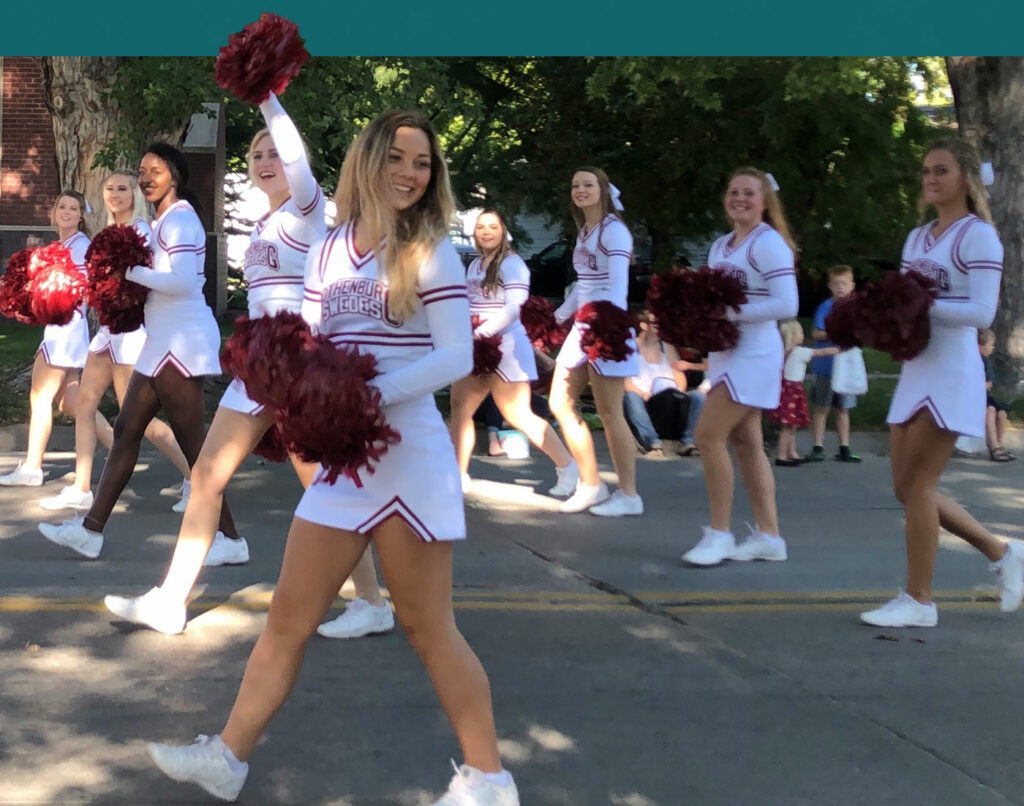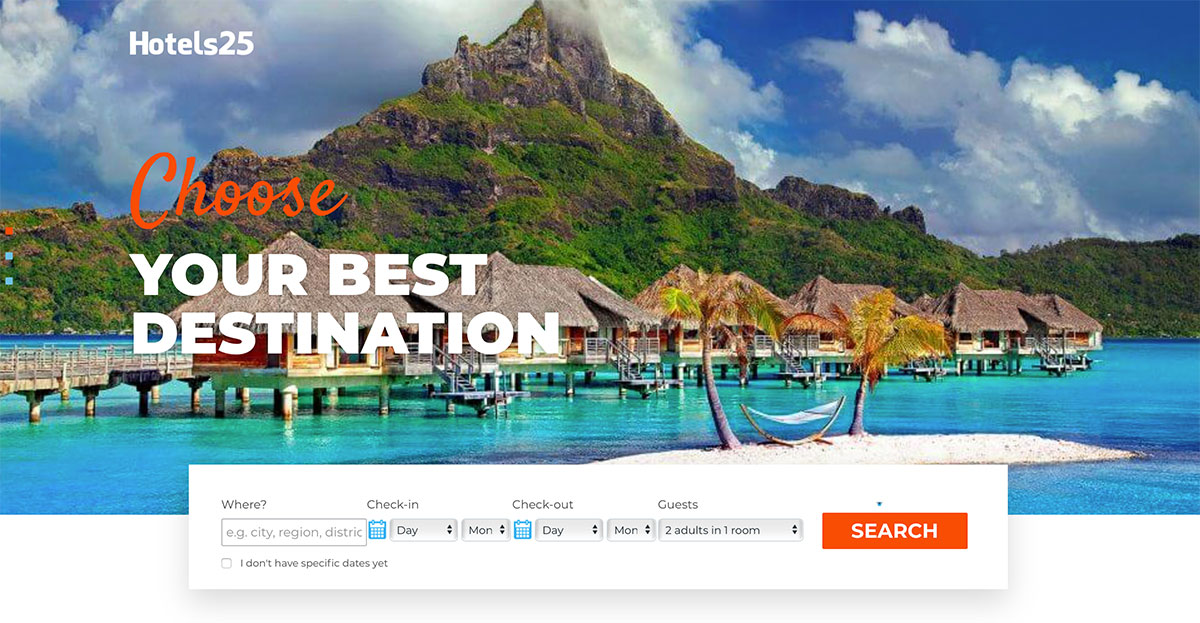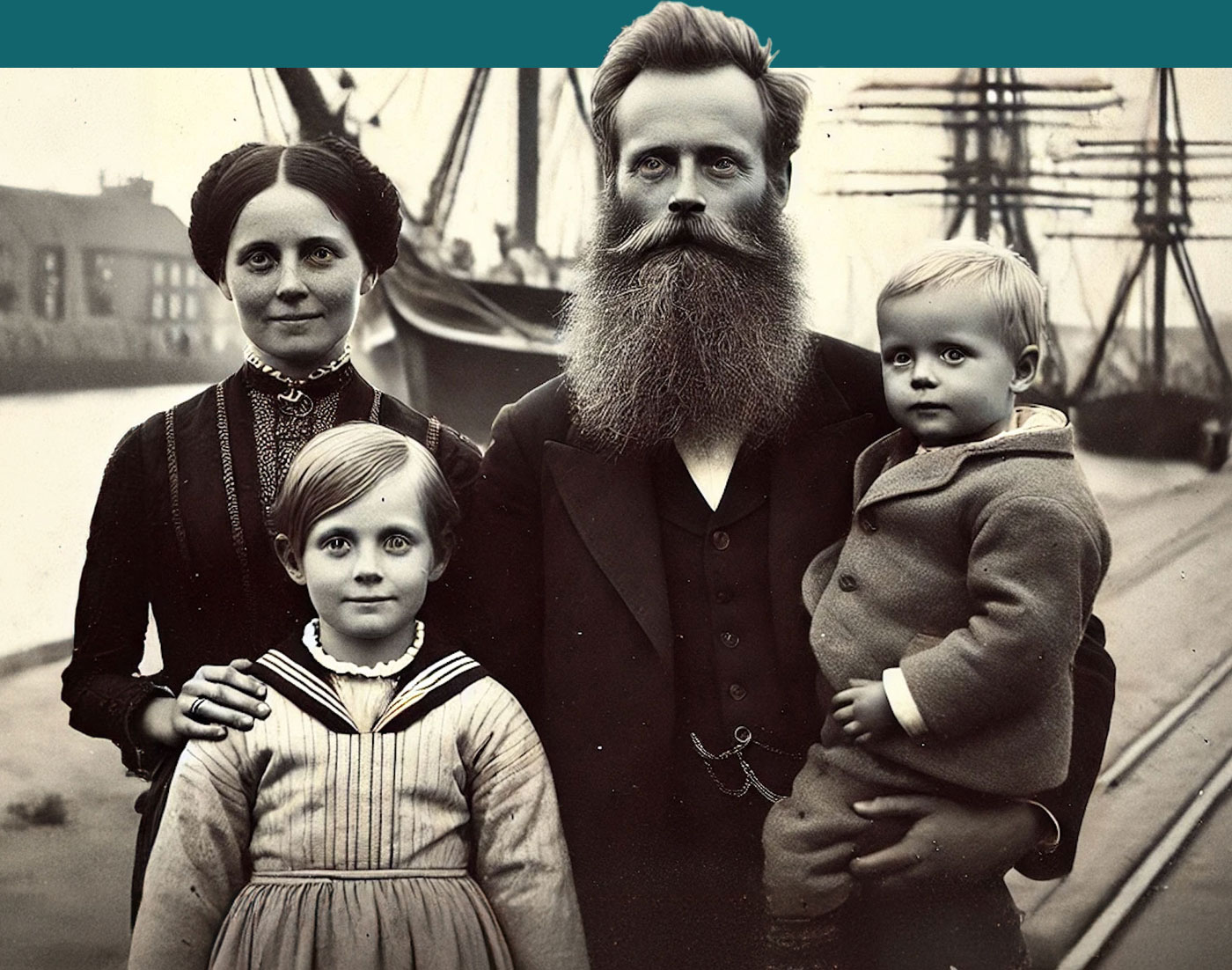HARVEST CELEBRATIONS AND HERITAGE:
EXPLORING GOTHENBURG, NEBRASKA
Welcome to another episode from my American road trip. In this one, I’ve reached Scandinavia … in Nebraska.
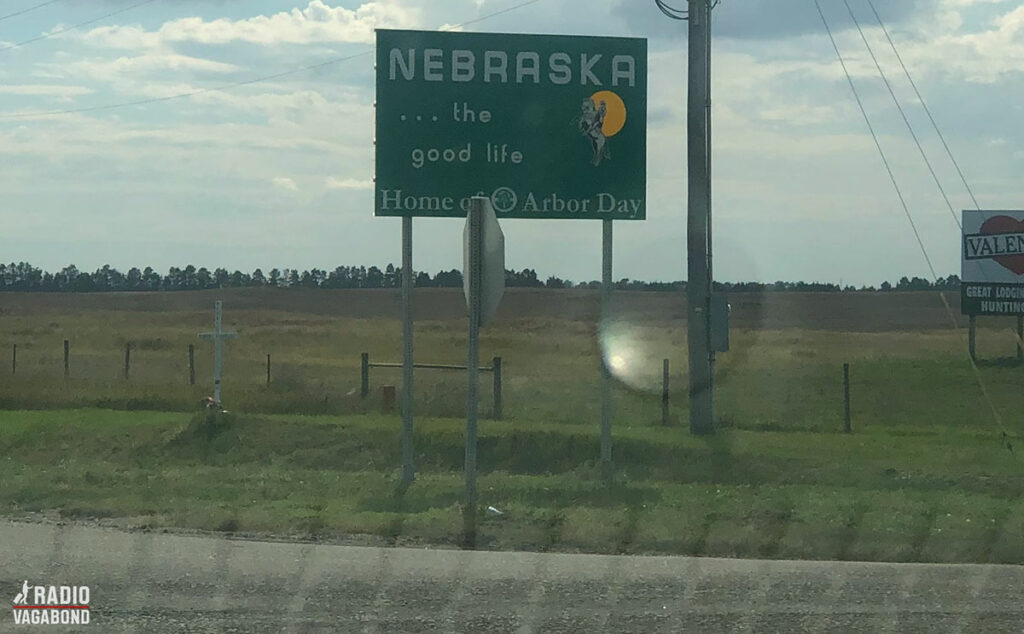
I had a “Farm Stay” that I booked through Airbnb. Here they call it “Retreat to Buffalo Creek Valley Bunkhouse” but you can also book it directly at their own website YourBunkhouse.com.
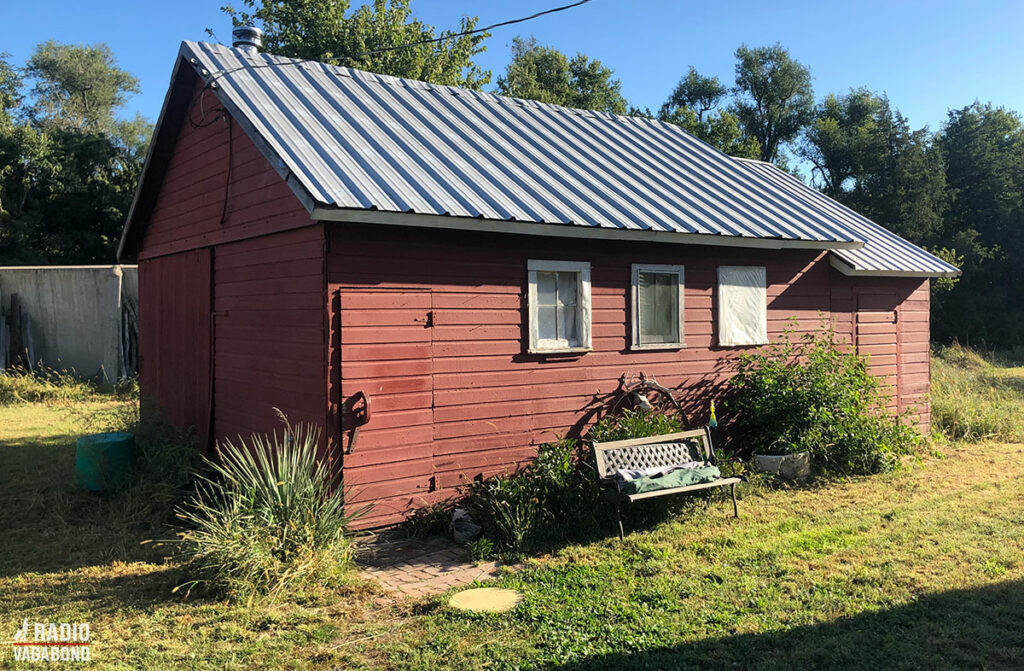
I get to stay in a renovated cabin that used to be the host’s Great Grandpa’s workshop. I’m greeted by John and their dog, and after showing me the cabin, we go over to the main house of the farm, where I meet Mary Lou and their grown-up son, Chris.
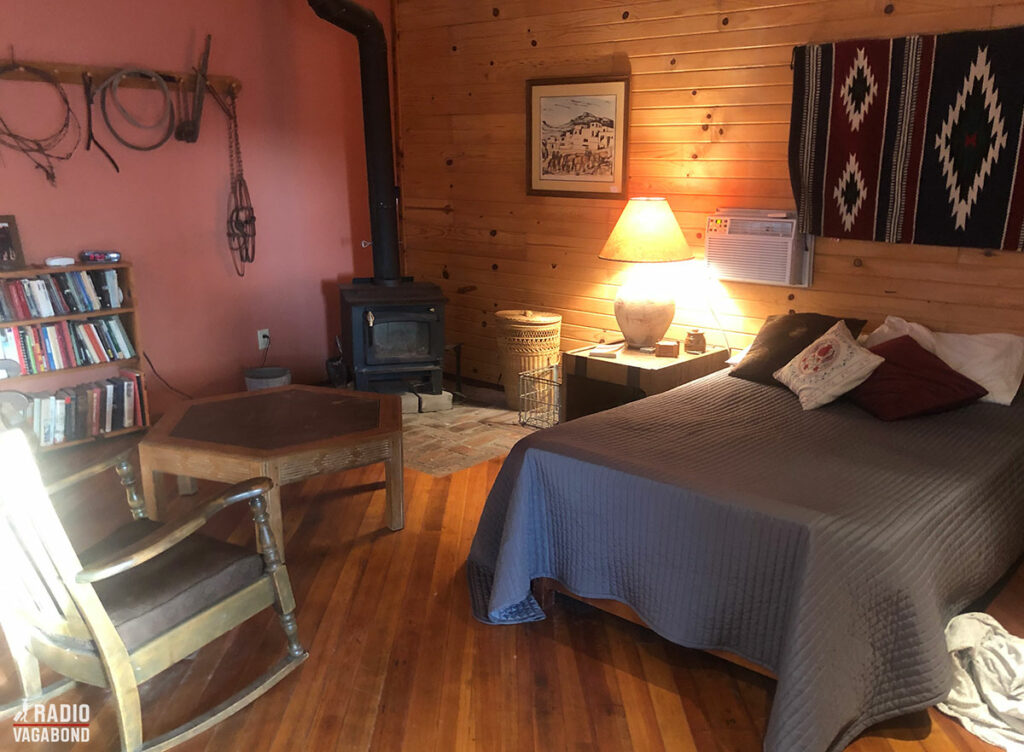
FROM PASTURES TO PLATE:
THE CATTLE INDUSTRY IN GOTHENBURG
Chris is a modern cowboy and as he was about to go check on the cattle roaming around on the fields. He asked me if I’d like to tag along, and obviously I accepted. So, we saddled up – in his pickup truck with the dog in the back and was on our way.
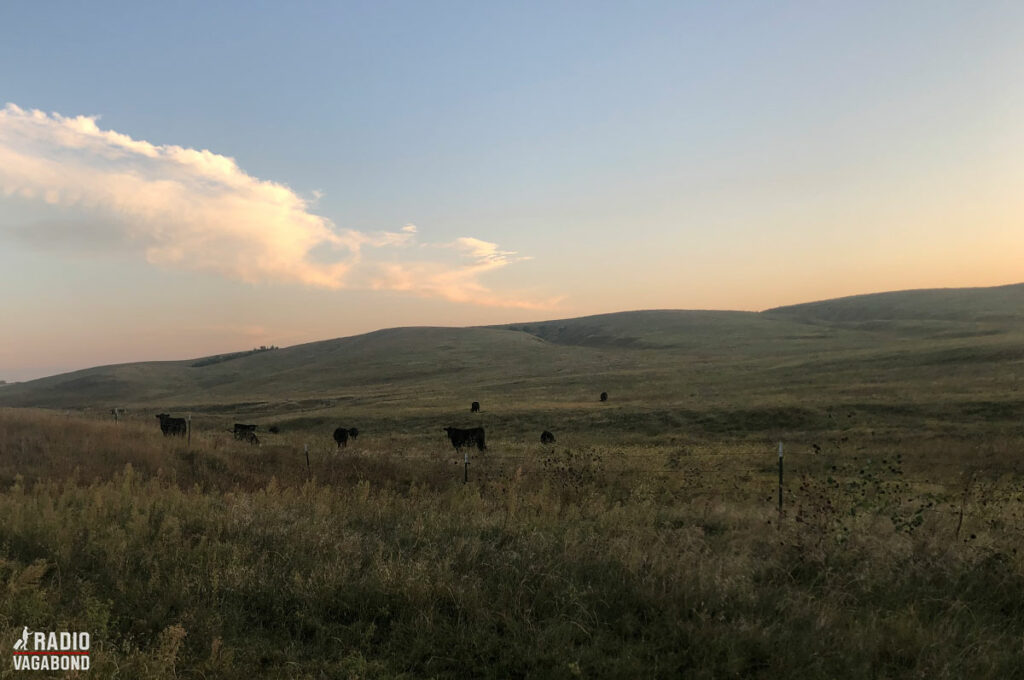
We drove around on the field looking at the cattle. The cows, a bull and even a little baby calf. I got to learn a lot about cattle farming in Nebraska from this fifth-generation cowboy.
As Chris gets out of the car to open the gate to the field, let me talk a little bit about cattle farming here in the state of Nebraska. It’s a significant industry, as Nebraska is a major producer of beef in the United States.
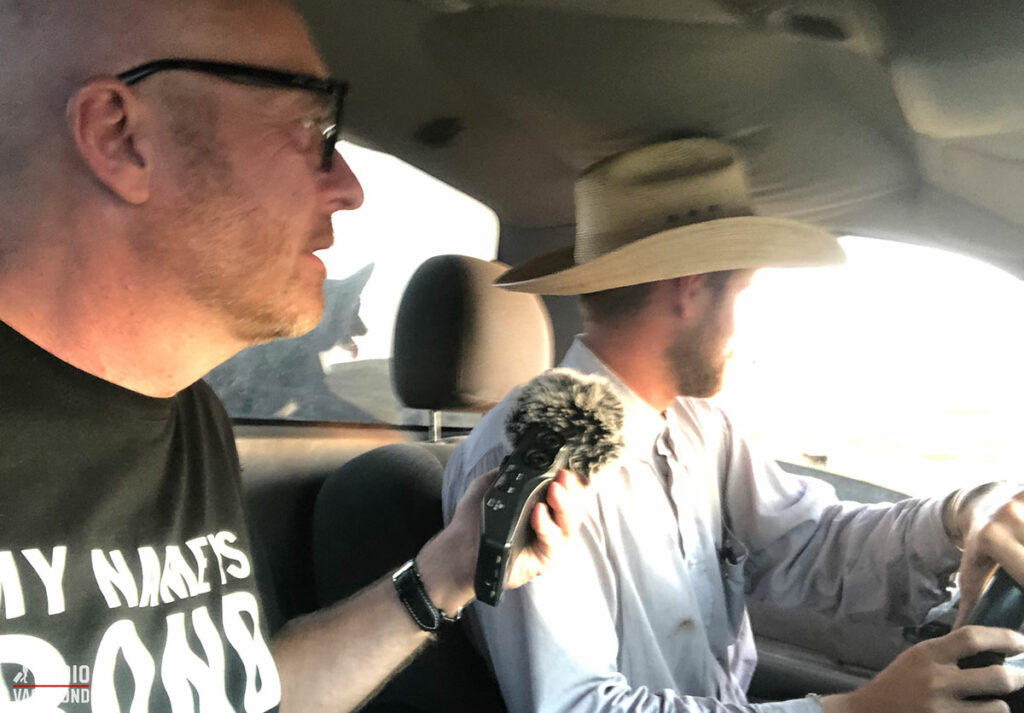
You’ll find a large number of cattle ranches and feedlots, where cattle are raised for meat production. Nebraska has favourable conditions for cattle farming, including a large supply of grass and feed crops, as well as a good climate for year-round grazing. The state also has a strong transportation infrastructure and is located near major beef-processing centres.
We’re driving on a bumpy hilly field, and I can see that Chris is a pro. He’s definitely done this before.
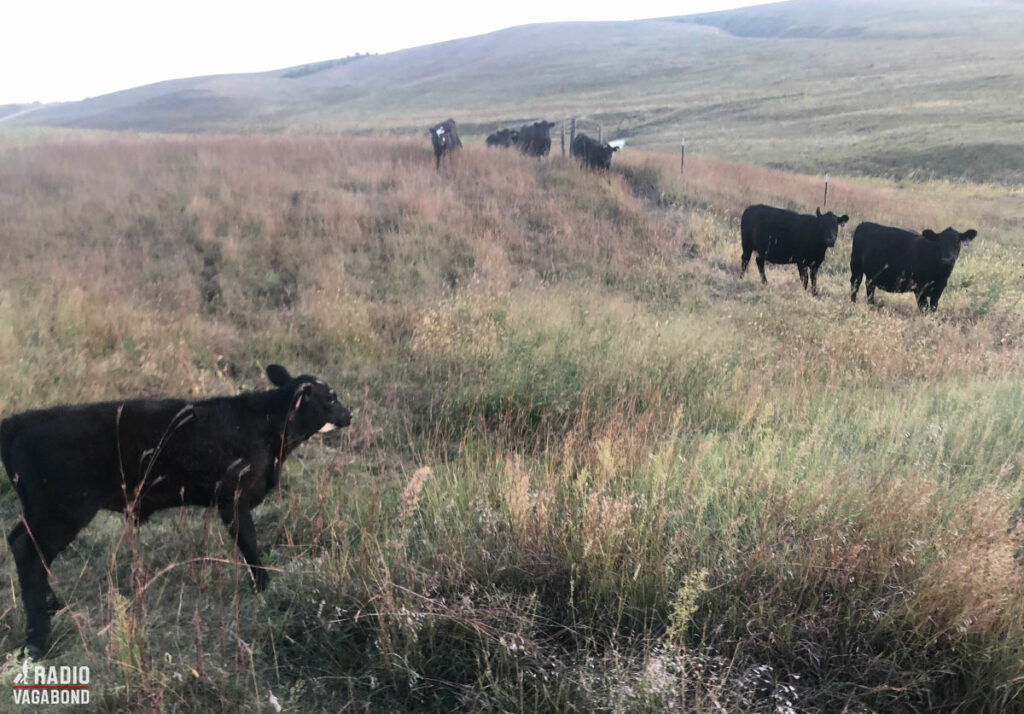
It might not be a big farm they have but, in my book, they have a lot of cows, a bull and when I was checking on the cattle with Chris, we spot the cutest little baby calf.
Cattle farmers in Nebraska use a variety of techniques to raise their animals, including pasture-based systems, feedlot operations, and a combination of both. In feedlot operations, they are confined to pens and fed a specially formulated diet to maximize weight gain but in pasture-based systems like here, the cattle are allowed to graze freely on grass.
In recent years, there has been a growing trend towards more sustainable and environmentally friendly cattle farming practices in Nebraska. Many farmers are using techniques like rotational grazing and conservation tillage to reduce the impact of their operations on the land and improve the health of their herds.
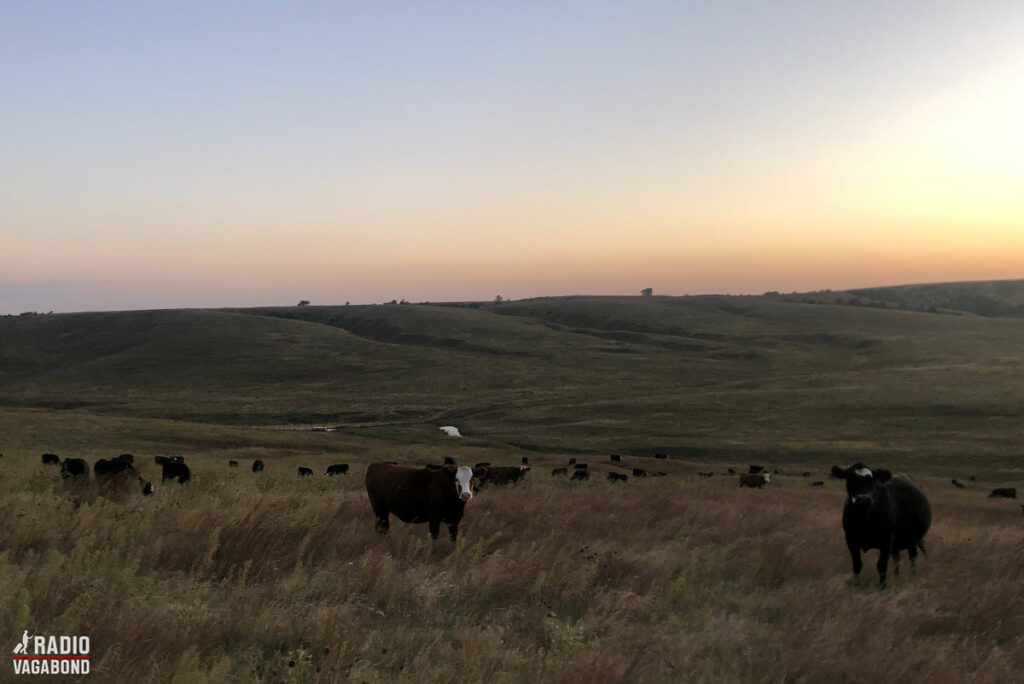
Their meat, Bunkhouse Beef, is 100% grass fed beef from start to finish. They guarantee their animals spend their entire lives happily living on open pasture. They are antibiotic feed free, hormone free, and are never fed any grain.
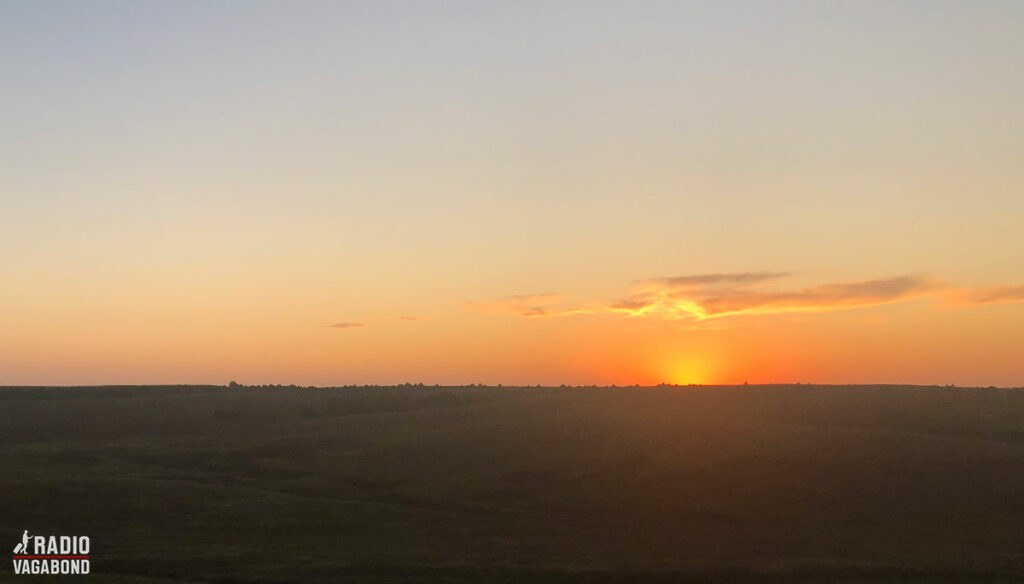
It was absolutely a unique experience staying at a farm in Nebraska and meeting the family. Mary Lou, John, and their son, Chris is in his late 20’s and fifth generation of this place – and a real cowboy. He taught me a lot about cattle farming which is an important part of the economy and culture of Nebraska.
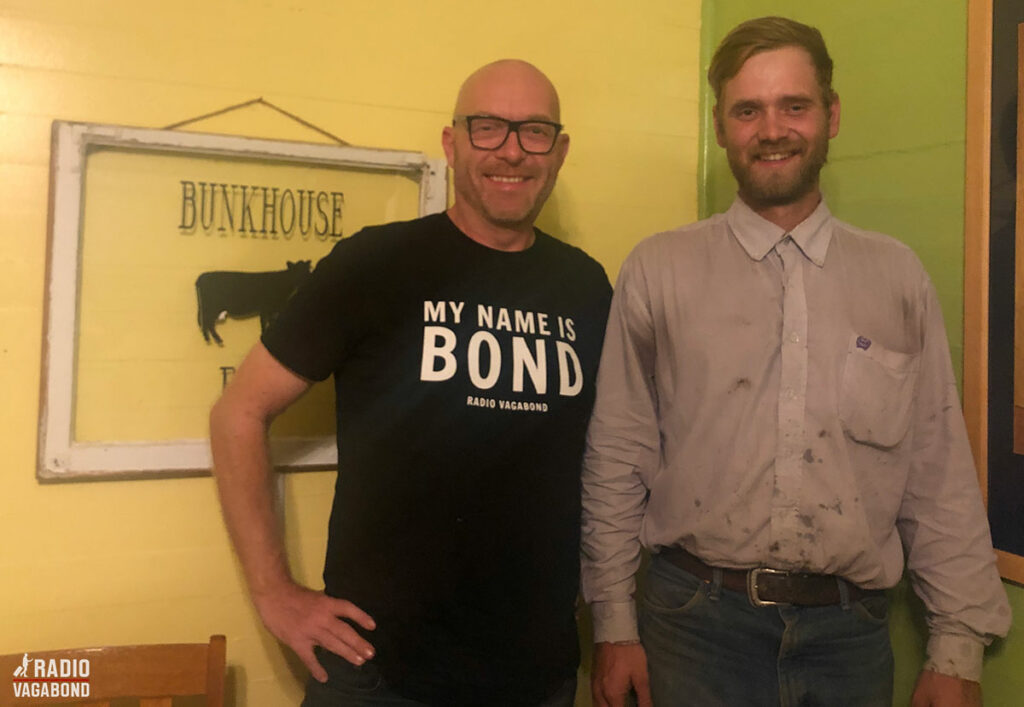
THE DANISH ANCESTOR
Chris’s mother Mary Lou is 25% Danish, and when I had dinner with the family, she told me a fascination story.
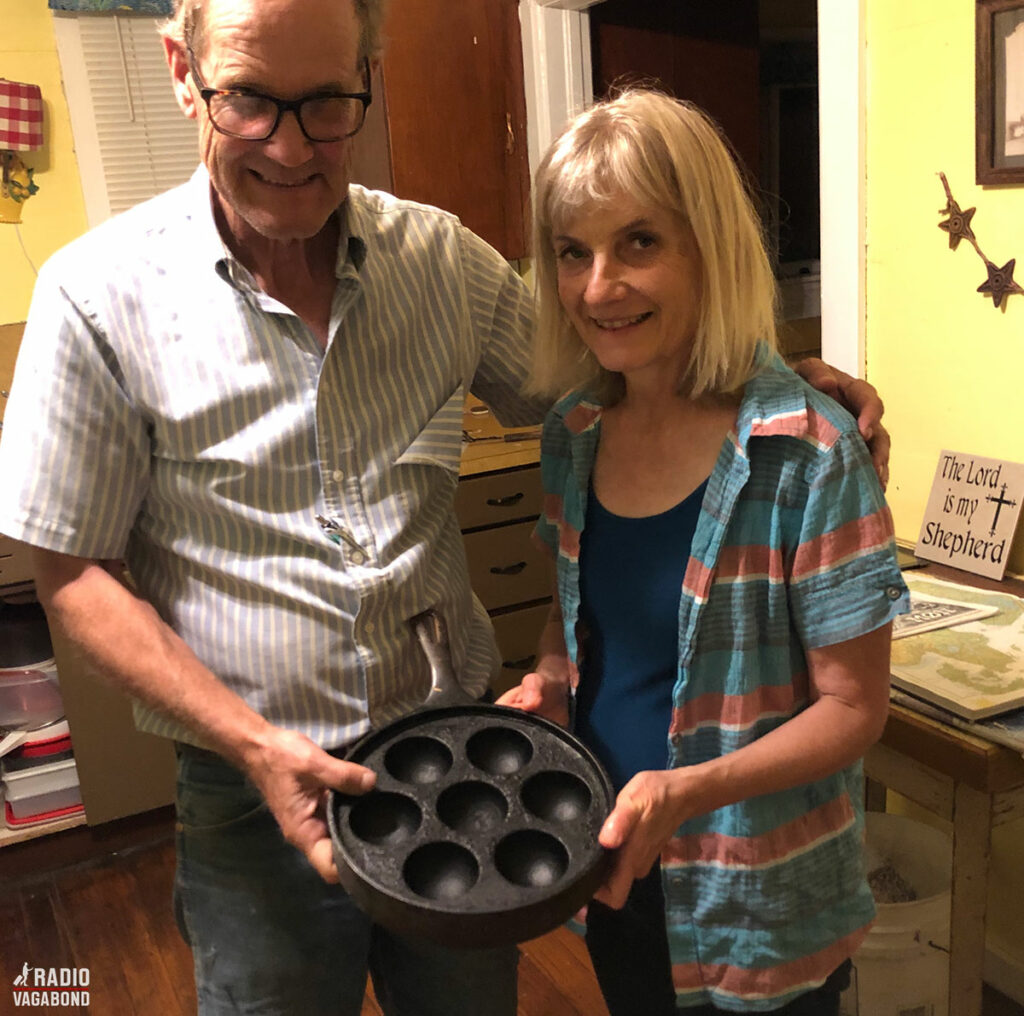
Before we get into the it, I want to mention two things: Firstly, when I was having dinner with the family and Mary Lou told me this story, I wasn’t recording. Plus, there were so many details that needed a lot more research, so in the production of this episode, I’ve asked Mary Lou to do that, and she’s been hard at work for days digging into her family history, talking to members of the family, and reading up on old letters and so much more.
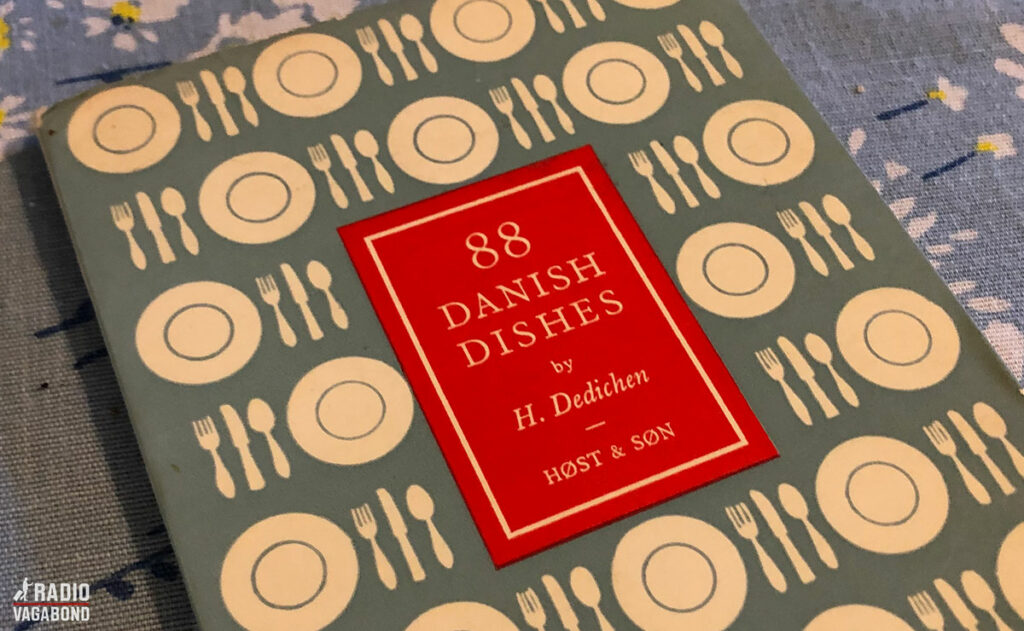
Also, I want to say that, with me being Danish, I’ve chosen to say the names of people and landmarks as we would say it in Danish. And a little funny fact: Mary Lou’s great grandfather’s name is in their world spelled different than how we would spell it. Mary Lou would say that his name is Neils but in Danish it’s actually Niels. Not spelled N-E-I-L-S but N-I-E-L-S. We would never spell it that way, and I bet you anything that Niels himself didn’t either – but somehow some time it got changed and stayed that way. Just a little fun fact.
With that, get ready for a tale filled with adventure, hardship, excitement, seasickness, and maybe a little bit of scandal.
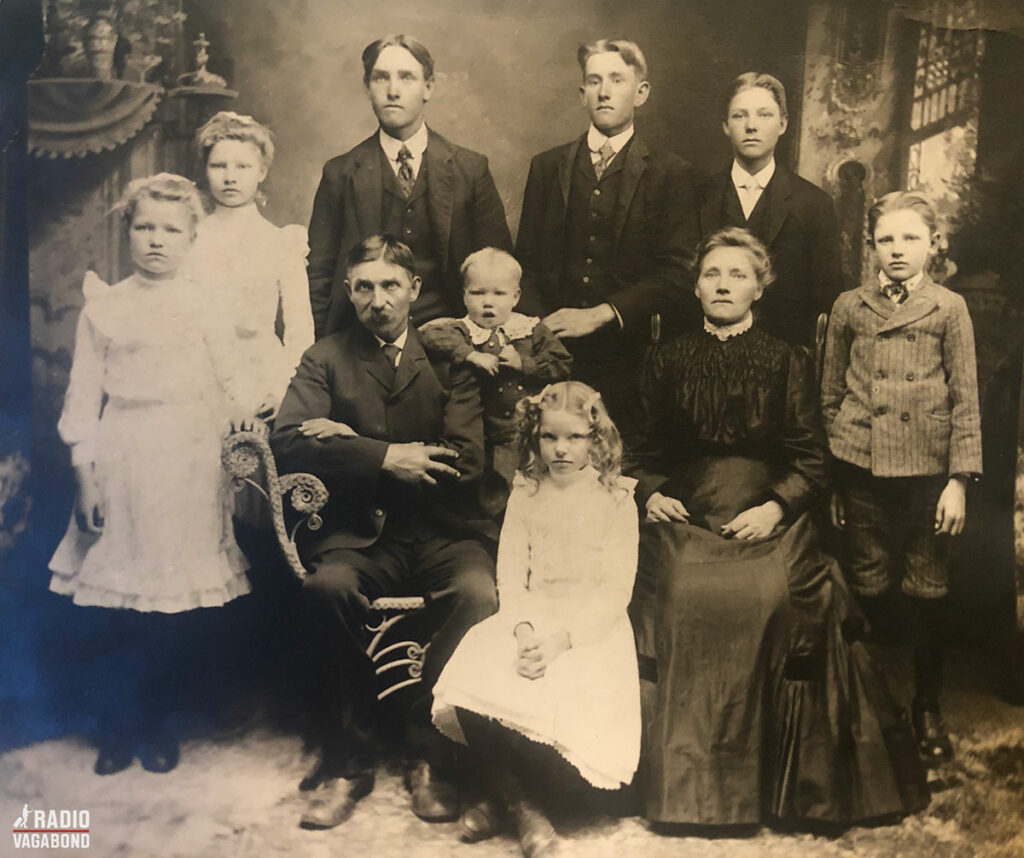
THE STORY OF A DANISH IMMIGRANT IN GOTHENBURG
Once upon a time, in a village called Råbylille on the small island of Møn in the southern part of Denmark, a girl named Marie was born in the year 1862. She and her family were very poor and as a teenager she dreamed of a better life in the great new country called America.
Her cousin Jim had been there and, and on a visit back to Denmark he called it “a land of opportunity.” After some consideration, Marie decided to embark on a journey to this “new land of milk and honey” far, far away in the search of a better life. Or was there another reason?
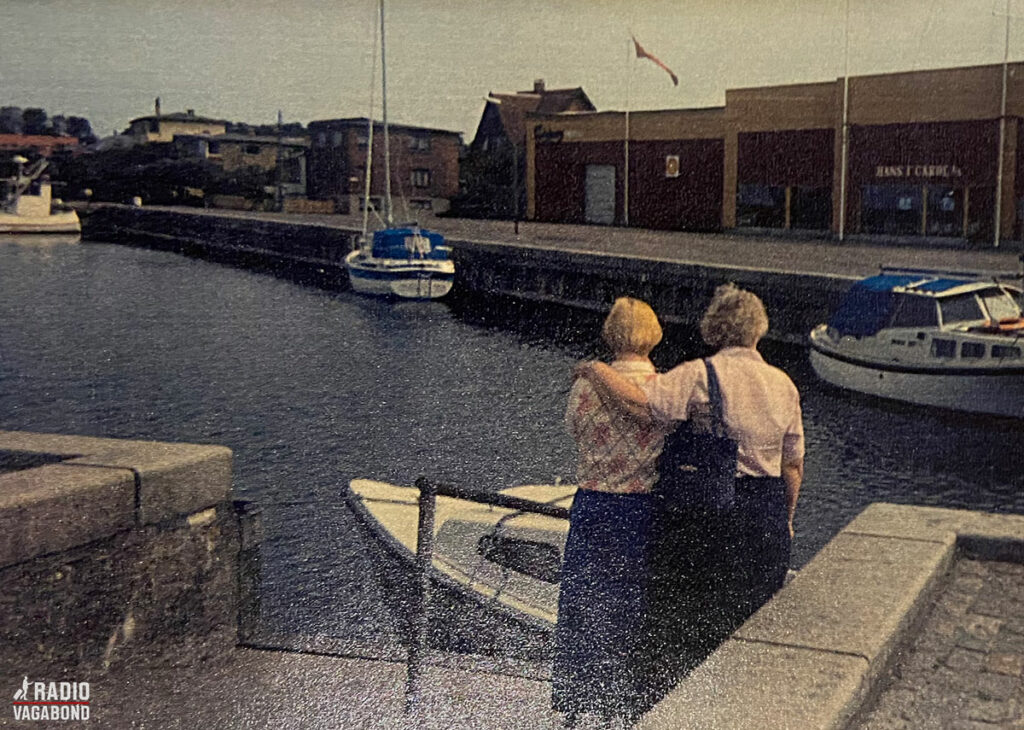
One early morning, she walked with her niece and dear friend, Kristine the ten kilometres from Råbylille to a dock in Stege on the small island. As they were walking Marie, said to Kristine:
“I am not going to be poor like my parents.”
On the small ferry from Møn to Copenhagen, teary-eyed she waved goodbye to her niece, not knowing if she would ever see her again.
I’m guessing that Marie – apart from being nervous, also was exited to the adventure laying ahead but unfortunately, but her excitement pretty quickly turned to nausea, and she spent most of the voyage on her back, praying for dry land. As the ship swayed and groaned, Marie was overcome by the affliction of seasickness, but maybe there was a touch of morning-sickness thrown in as well.
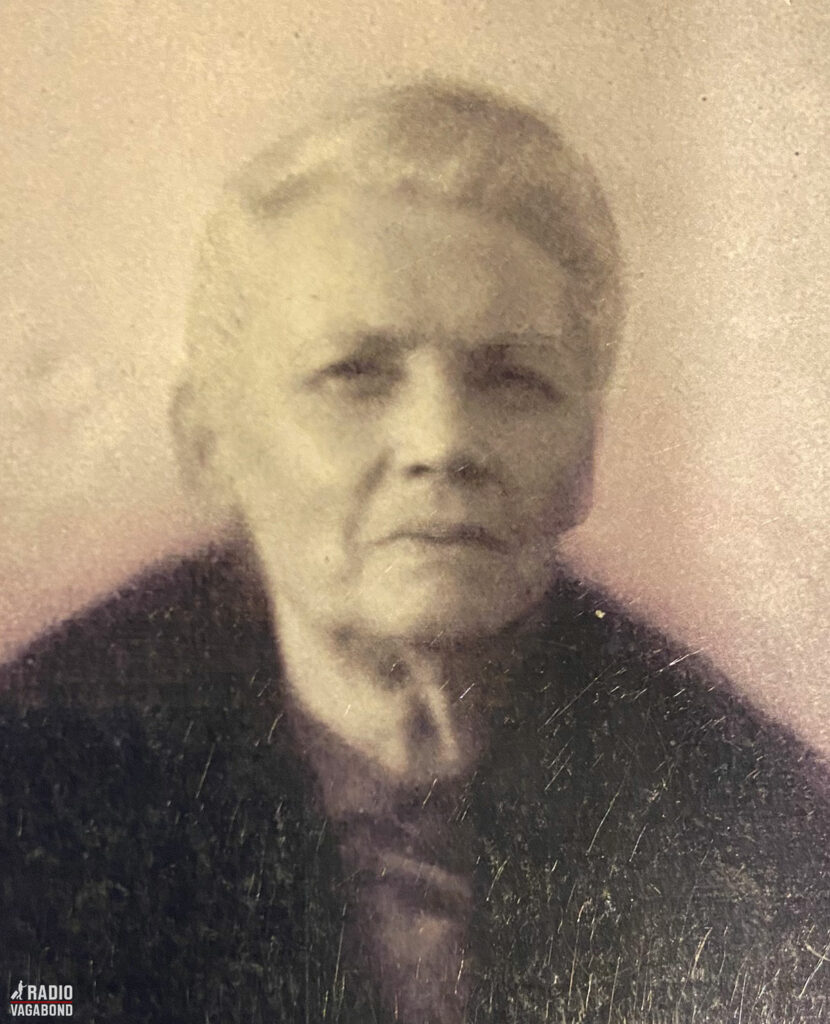
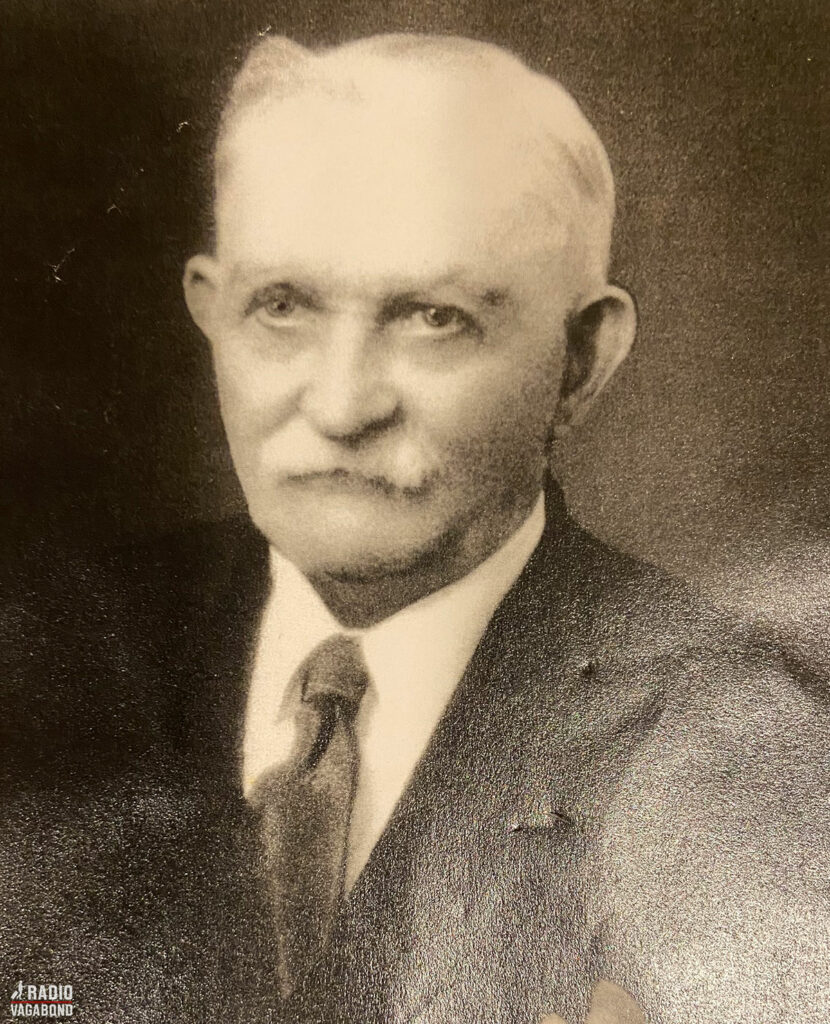
This trip and the seasickness also meant that Marie would never see Denmark again. In a letter home to Kristine in 1883, she wrote:
“A lot of people – like Cousin Jim, go home to Denmark to visit, but as I get so sea-sick that I almost die, I dare not sail, and I shall never come back to Råbylille and Møn again.”
It was also told that she could barely watch the wind blow across the water in the stock tank on the Nebraska farm without her getting seasick. But despite being seasick (or something else), she persevered and made it to the shores of America … alive. And after that all the way to Omaha, Nebraska in the center of the country. This in itself is a long journey of more than 1200 miles (2000 km), and she probably made the journey on the brand-new Transcontinental Railroad (originally known as the “Pacific Railroad”).
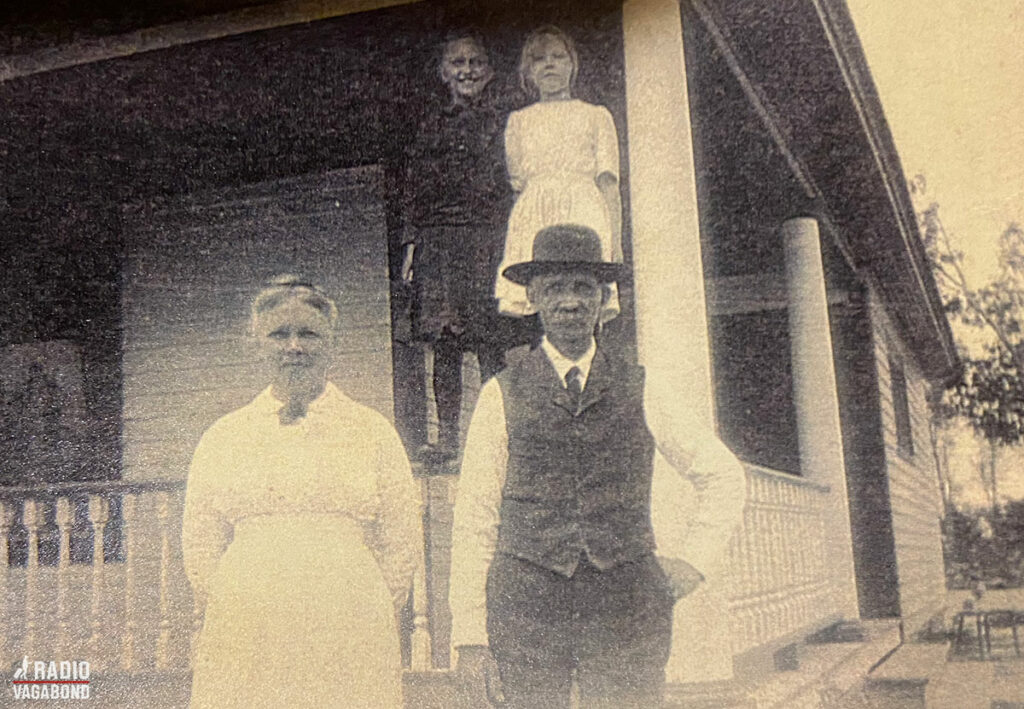
In Omaha, she was introduced to a man named Neils, also from Denmark. He had immigrated with his mother and two brothers from Thisted of their home country a few years earlier. The Danes listening, will know that Thisted is in Thy in the north-western part of Denmark, and very rural. It actually looks a bit like this part of Nebraska. And even with the small distances in Denmark, it’s very far from Møn. Just about as far as you can get in the country, and very unlikely that someone from Møn should meet someone from Thisted. But in this story, that’s exactly what happened.
Neils, a young 25-year-old man was looking for a suitable wife, and his family in Omaha, apparently had heard about this new young girl from Denmark, fresh of the boat. And a marriage somehow either was arranged, or they were simply introduced to each other by the family and fell in love. Marie fit the bill, and they ended up getting married and settling down in a place called Wild Horse Valley, near Brady, Nebraska.
Marie had a son named Albert, but the circumstances of his birth were shrouded in mystery or maybe a bit of sadness or a small scandal. Officially he was born after Marie and Neils were married on October 2nd in 1886, but someone in the family suspect that this was not his actual birthday. That the date was “adjusted” to cover up a story of his untimely birth.
Also, no one knew for sure who the father of Albert was. Maybe it was Neils, but maybe it was not. One theory was that she had been taken advantage of by a man in Omaha where she worked before she could speak English.
Another theory (that also was the first thing that came to my mind when I heard of a teenage girl going on a one-way ticket across the world without her family), is that the young Marie already was pregnant when she got on the ship from Denmark and had chosen to “flee away” from the shame of having a child out of wedlock. Maybe that was part of the reason she got so sick on the ship from Copenhagen.
Questions on this theory surround the story on both sides of the Atlantic, for even a cousin in Denmark asked a visiting relative:
“Did you ever figure out who the father of Albert was?”
No one will ever know what happened – and it doesn’t really matter. No matter what, this is truly a story of people who handled a difficult situation in the best way they knew how. And regardless of the circumstances of Albert’s birth, Neils loved him and raised him as his own.
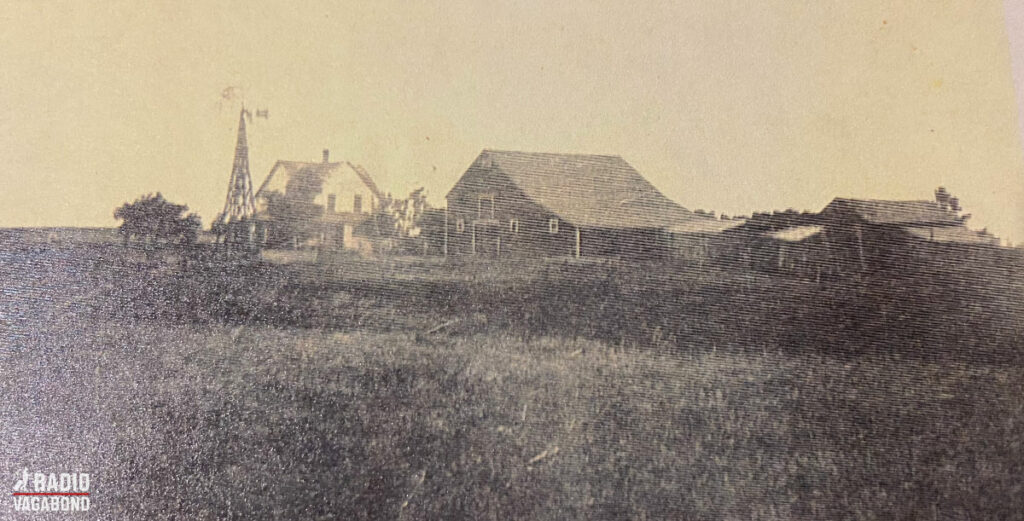
Neils and Marie built a successful farm and an impressive home on the Wild Horse Valley homestead and lived well beyond the poverty level of her Danish parents. It’s been said that their house looked like a mansion compared to her home in Råbylille.
They had nine children, but Marie also faced hardships and illnesses and losing two of the children. But they got through all this with a strong belief in God and Jesus. At some point Marie wrote in another letter back to her nice in Denmark:
“Kristine, I am getting old and can’t work much anymore, but my daughters work for me.”
Marie wasn’t really that old: Only 50.
The oldest son Albert went on to marry a Swedish woman and had a family of his own. And their son grew up to become the father of Mary Lou who is telling me the story as I’m having dinner with her and her family on the farm in Nebraska.
In the end, it’s a story of people doing the best they can with the hand they’ve been dealt. Marie’s legacy was one of perseverance and love, as she made a life for herself and her family in the “new land” far away.
PARADING IN GÖTEBORG – GOTHENBURG
The Farm is around 20 minutes north of Gothenburg, Nebraska. And as the name indicates there are not only Danish ancestors here. Gothenburg, Nebraska is named after Göteborg, Sweden, and is noted for its large number of residents of Swedish descent.
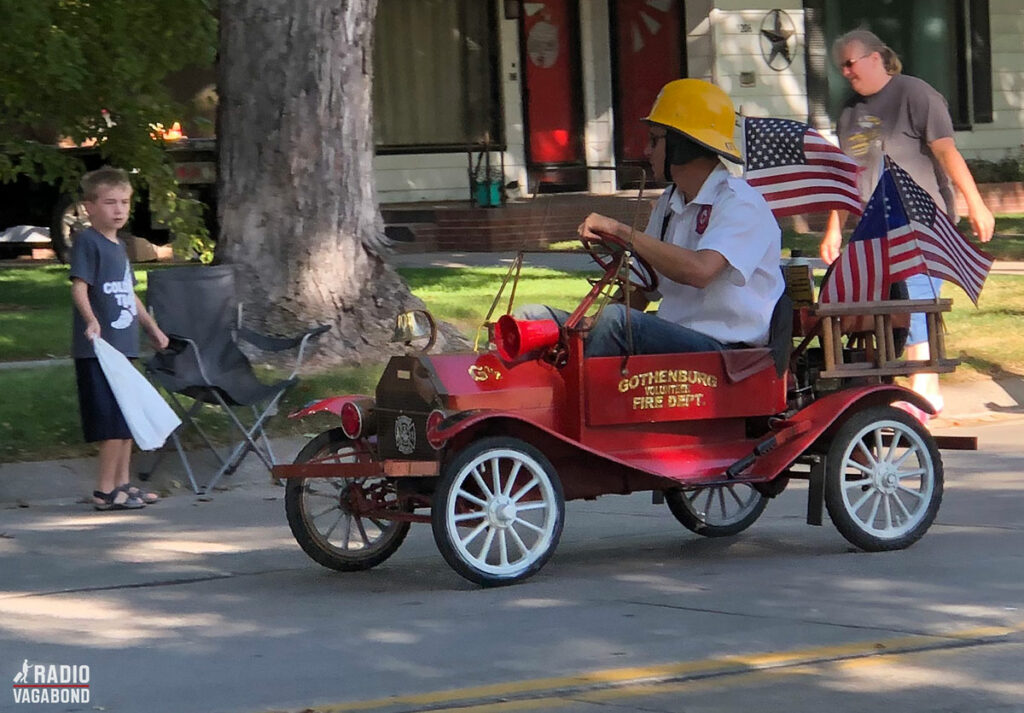
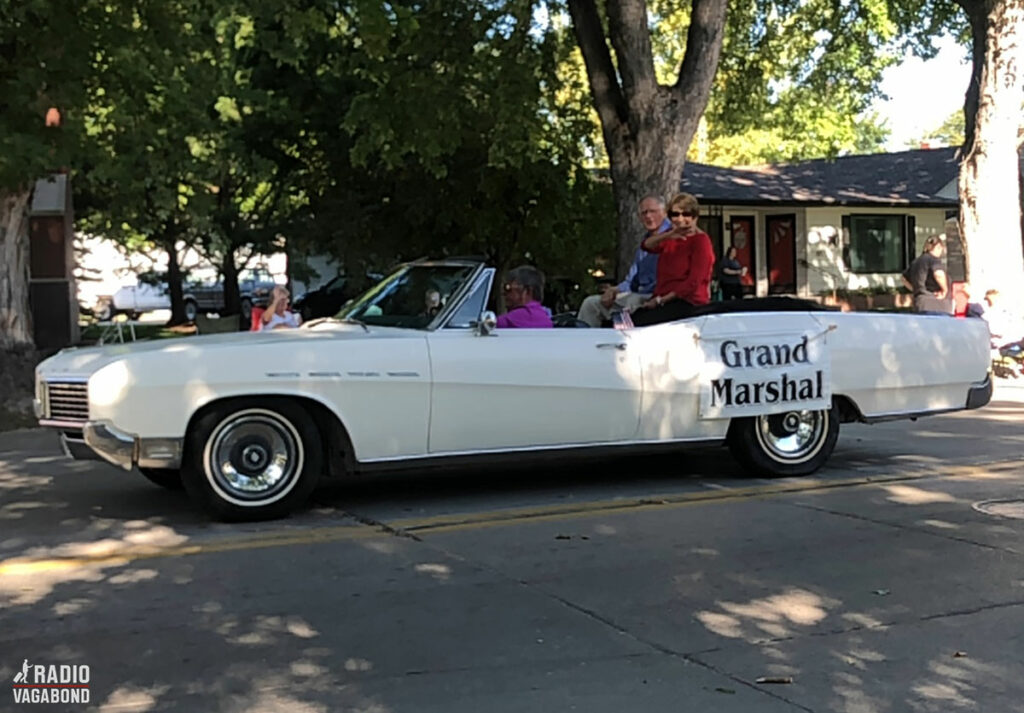
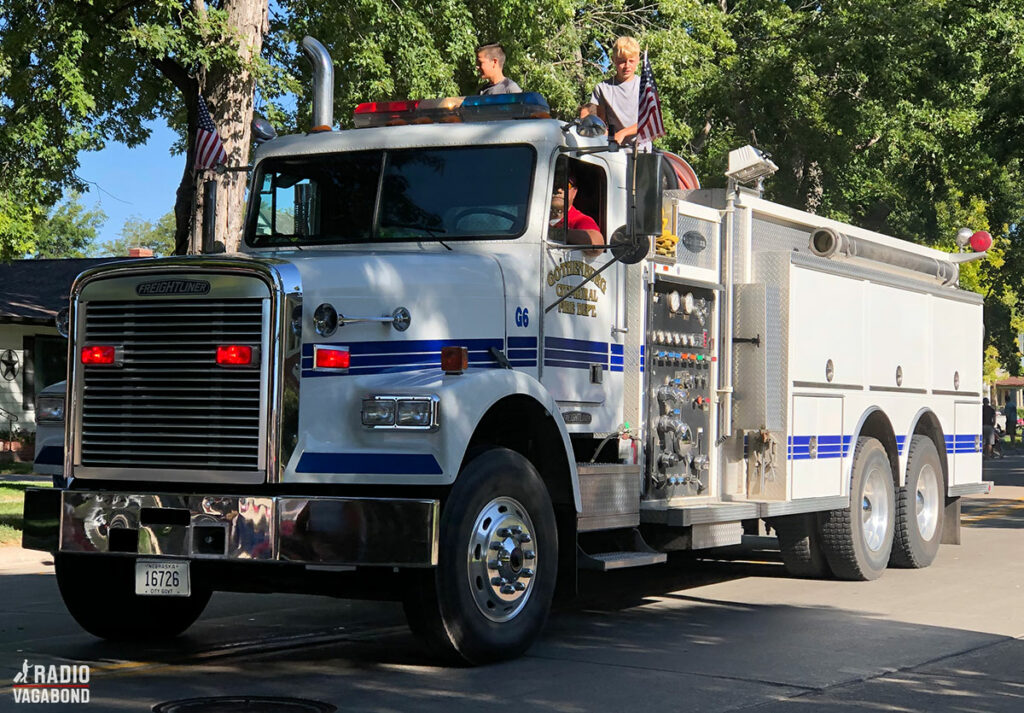
This Gothenburg was founded in 1882 by Olof Bergstrom. After coming to America from Sweden in 1881, Bergstrom worked for a time on the Union Pacific Railroad, then homesteaded in Dawson County near Gothenburg. He eventually became a land agent for the Union Pacific. They were able to take some land – the so-called “railroad land” and sell it off to fund the railroad.
Bergstrom also selected the site that was to become Gothenburg and located a farmstead about a mile north. The Union Pacific Railroad laid out the original town of eight blocks parallel to the railroad tracks. Bergstrom made several return trips to Sweden to bring more Swedish settlers back to Dawson County.
At the 2010 census there were 3,574 people in 1,494 households, including 974 families, in the city. But the next day I got to see what a vibrant little town it is.
Mary Lou invited me to join them, at their friend, Jan’s house on Avenue E across the street from Gothenburg Public Library. Here we would have a front row seat in some garden chairs to the annual Gothenburg Harvest Festival Parade.
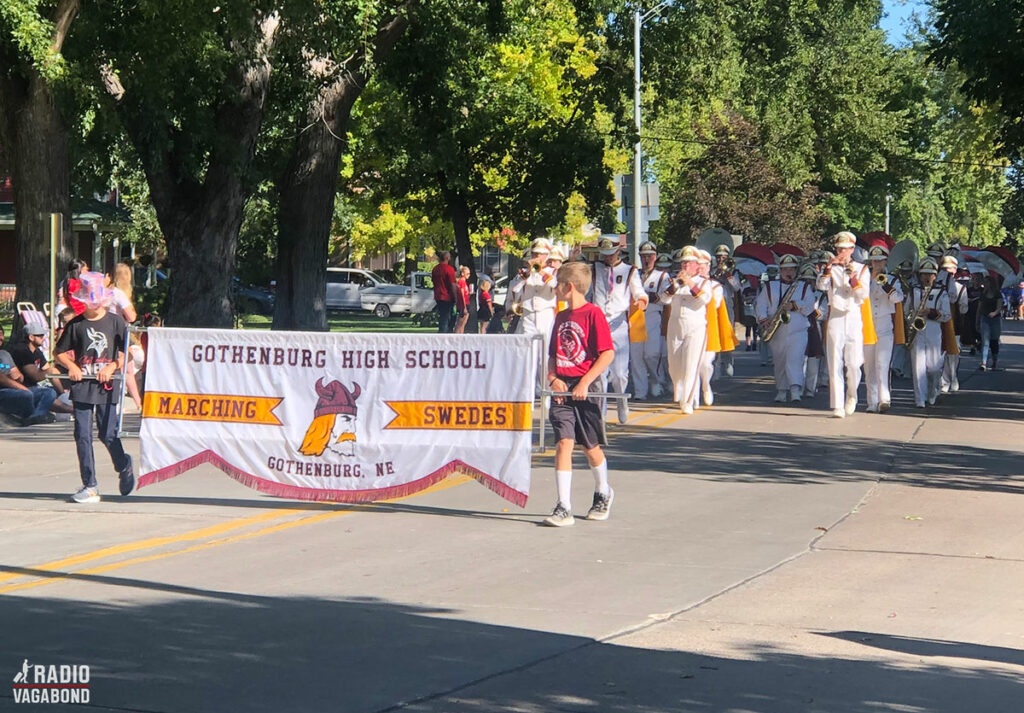
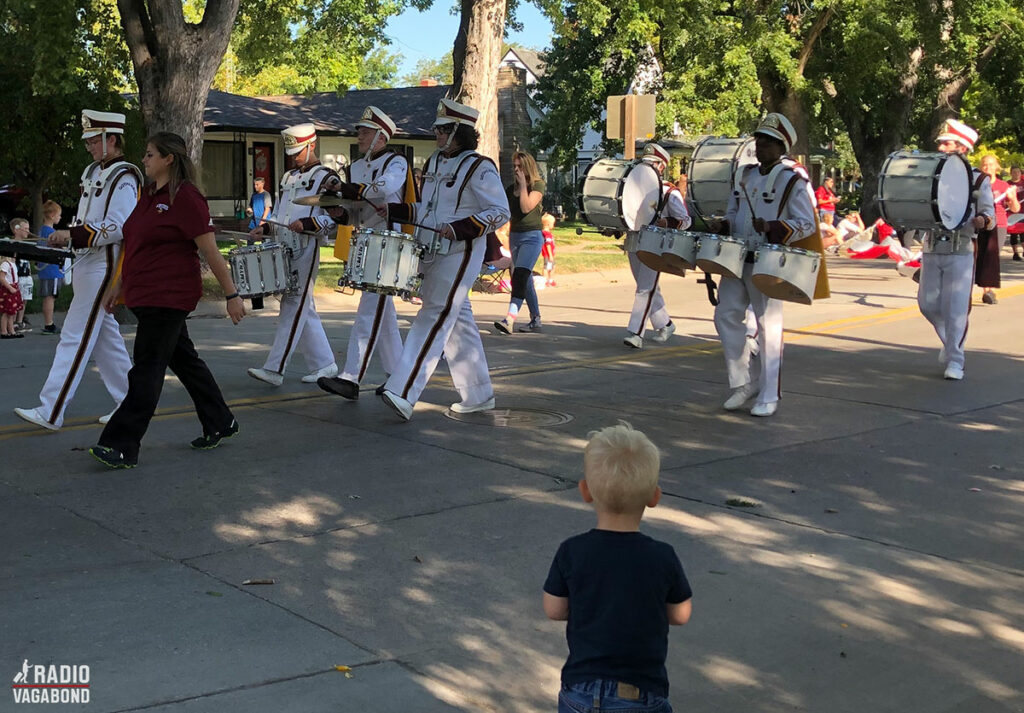
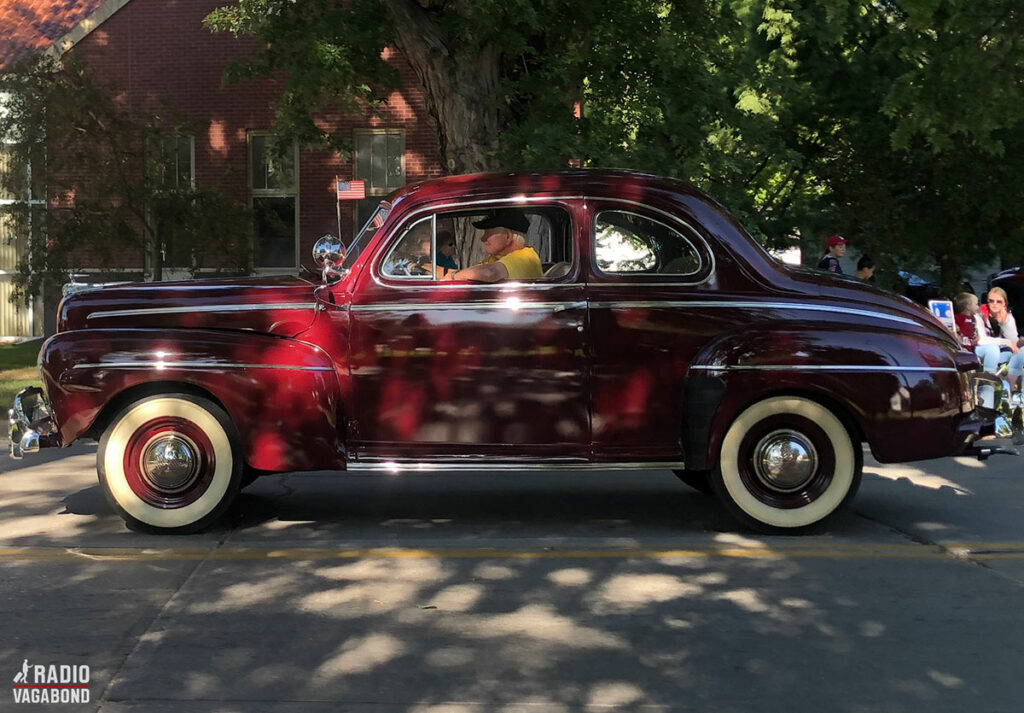
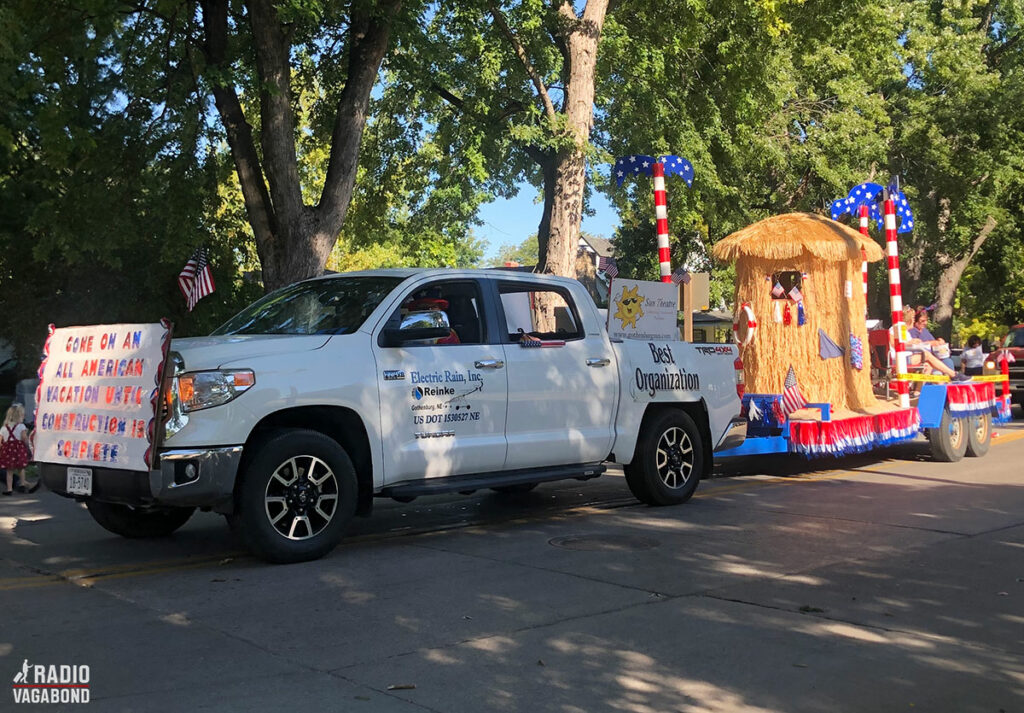
It’s a big deal for the community and maybe even more so for the kids. Because everyone in the parade is throwing out handfuls of candy.
And what a parade it is! We have fire trucks, marching bands, cheerleaders, and even a guy dressed up as a cow.
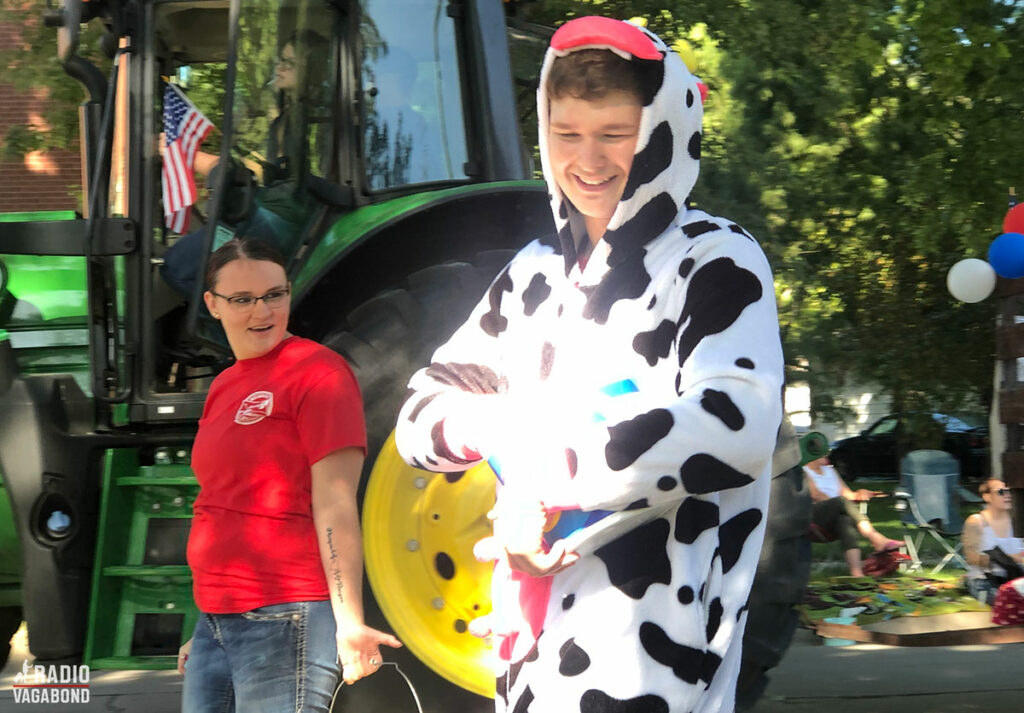
But let’s not forget the real stars of the show: the dentists with a sign saying,
“Fight Tooth Decay the American Way”.
I’ll say. They were also throwing out candy. Yes, you heard me right. These dental heroes are fighting tooth decay the American way, one lollipop at a time. And don’t worry, they’re not just giving out any old candy. They’re giving out the good stuff, the kind that will make you want to come back for more fillings.
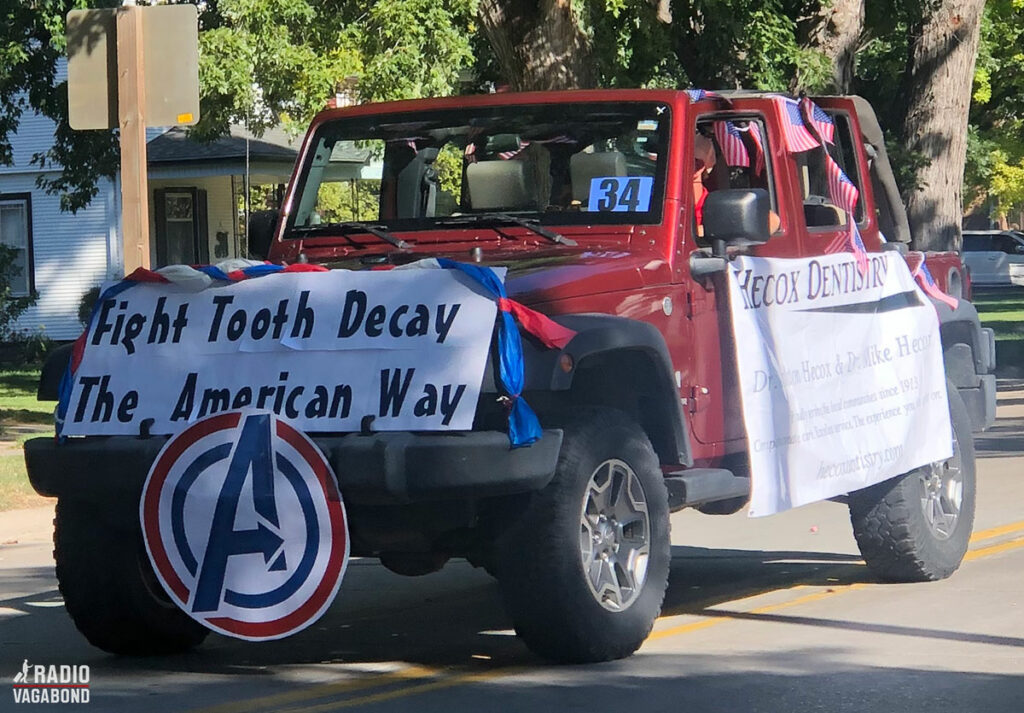
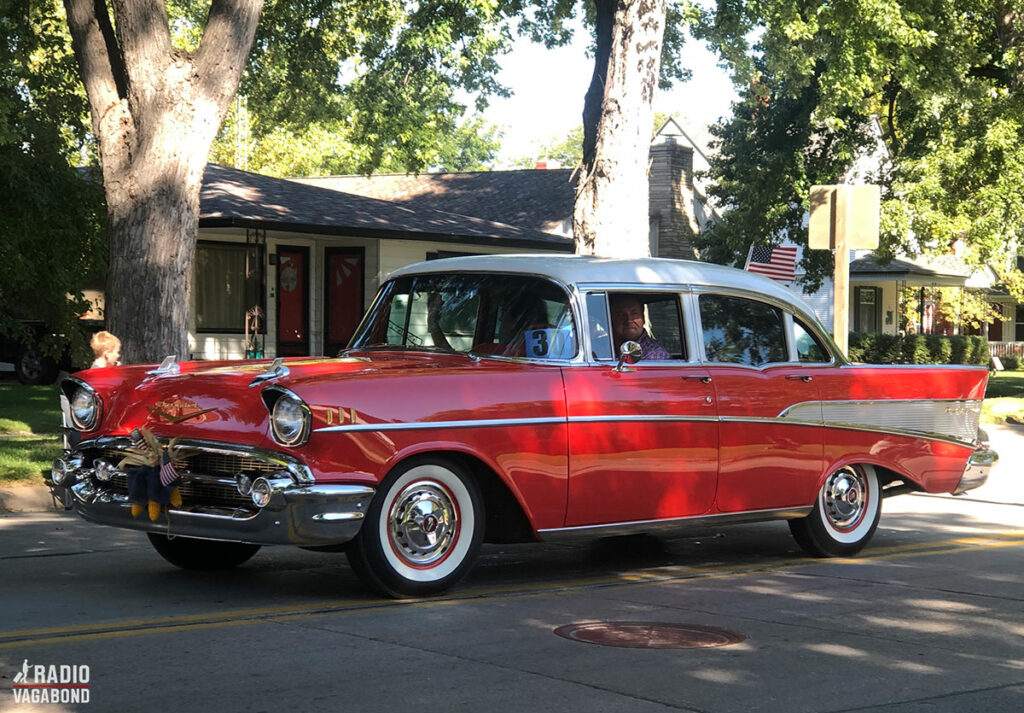
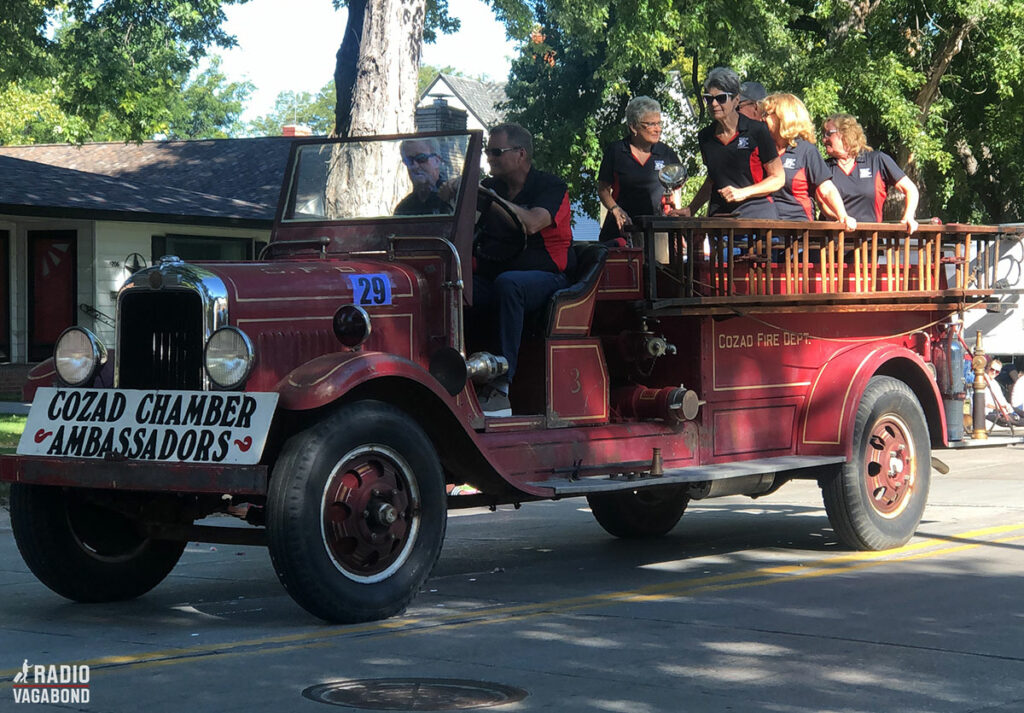
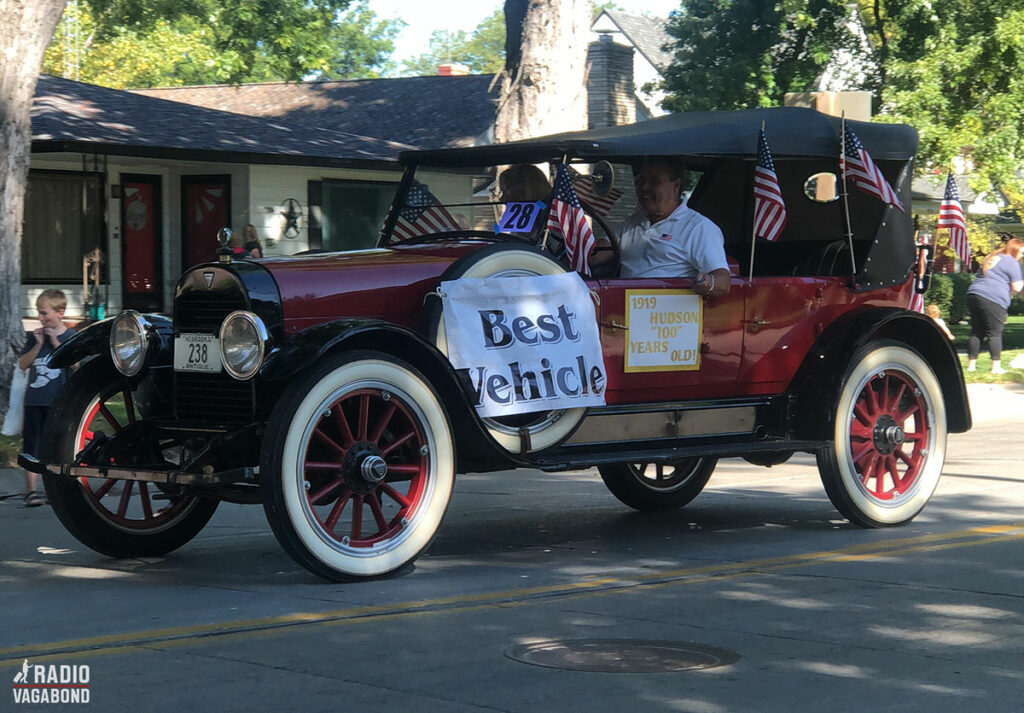
As the parade goes on, we see a float from the Gothenburg Methodist Church, complete with red and blue balloons arranged in a star and a giant green t-shirt with a bible quote. And let’s not forget the classic American cars, including a hundred-year-old Hudson car. These beauties are a reminder of a simpler time, a time when cars didn’t have computers and you had to crank them to start.
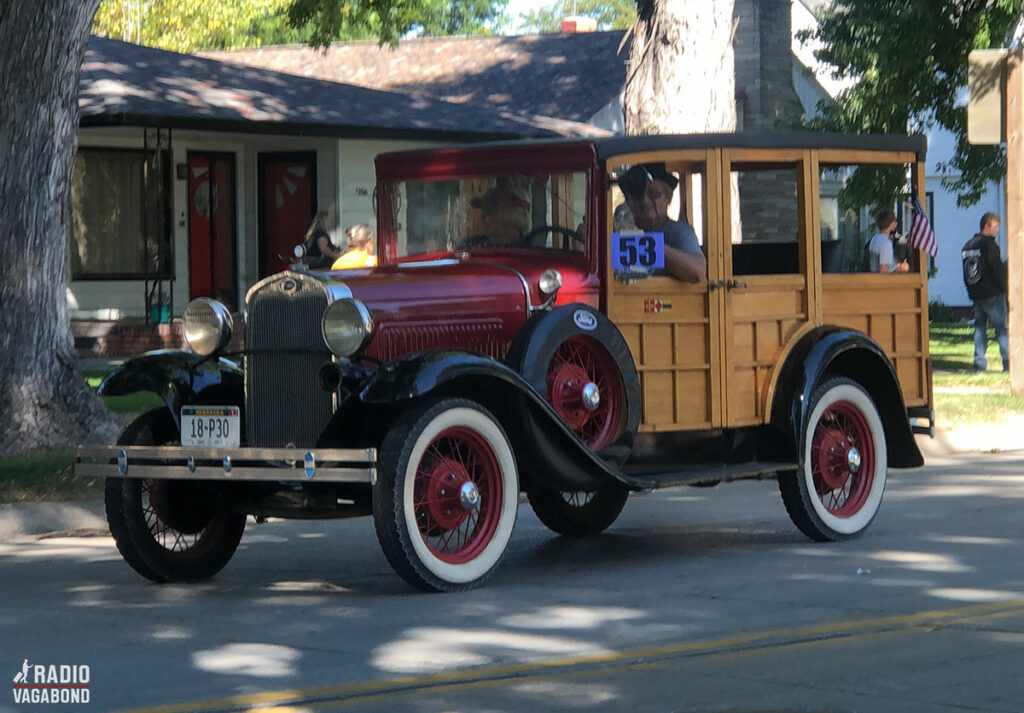
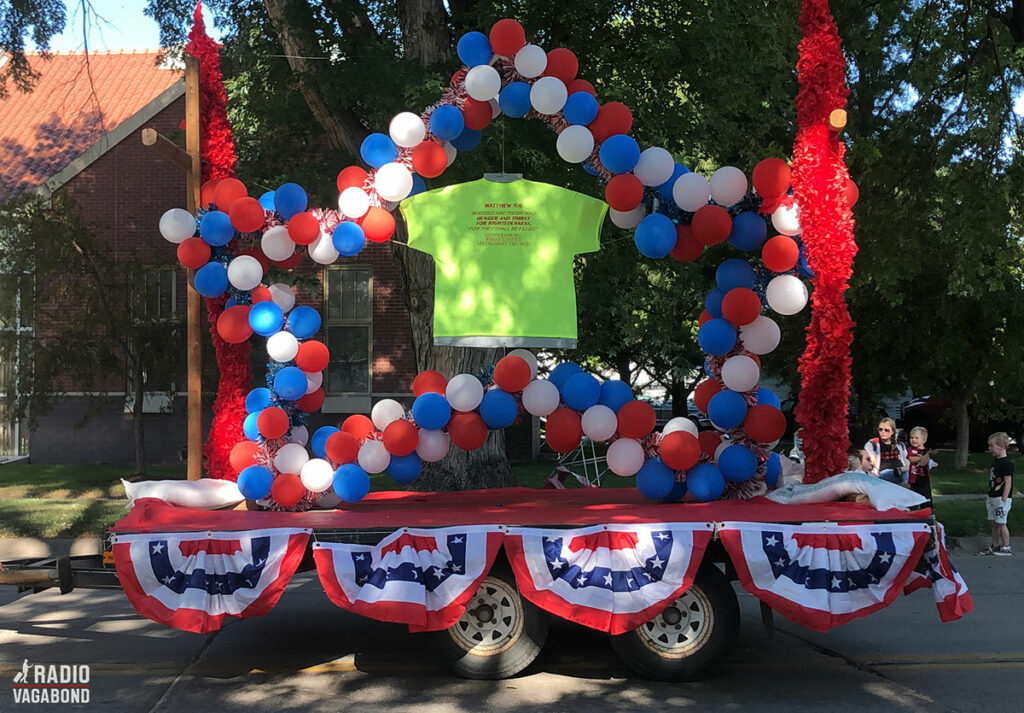
And who could forget the winner of the National American Miss beauty pageant, riding on a truck and wearing a tiara? She’s the belle of the ball, the cream of the crop, the… well, you get the idea.
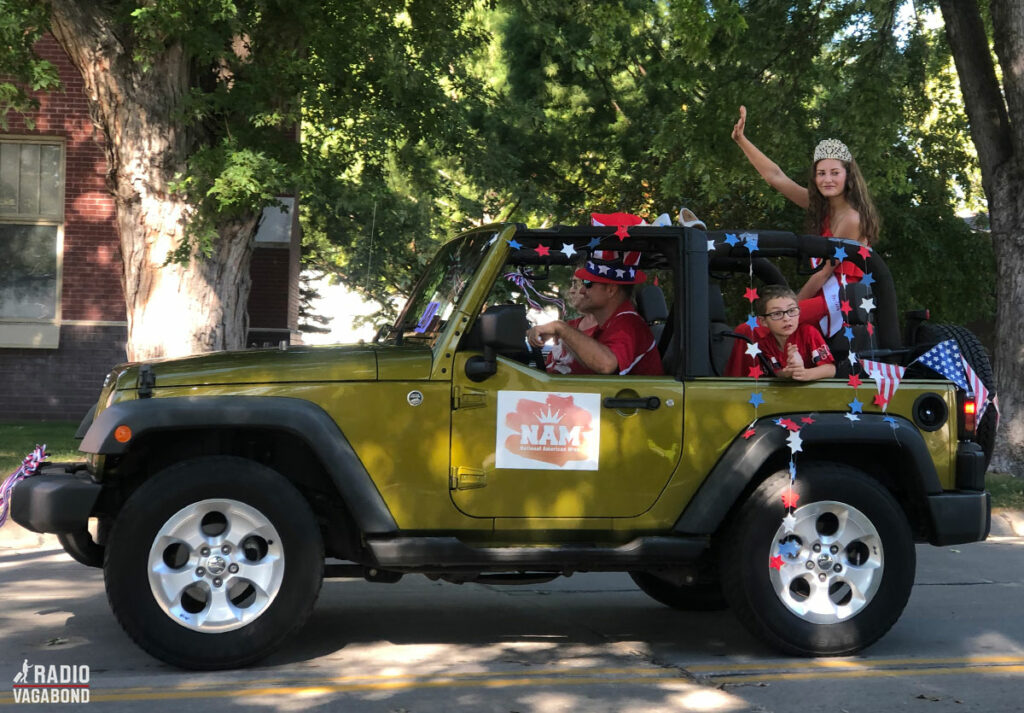
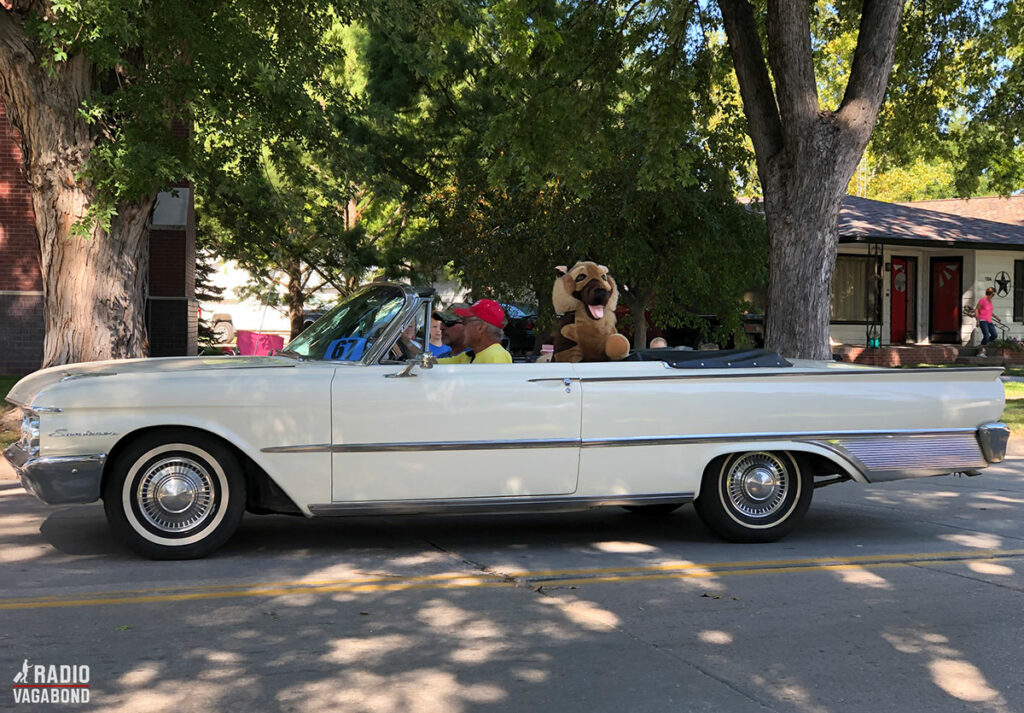
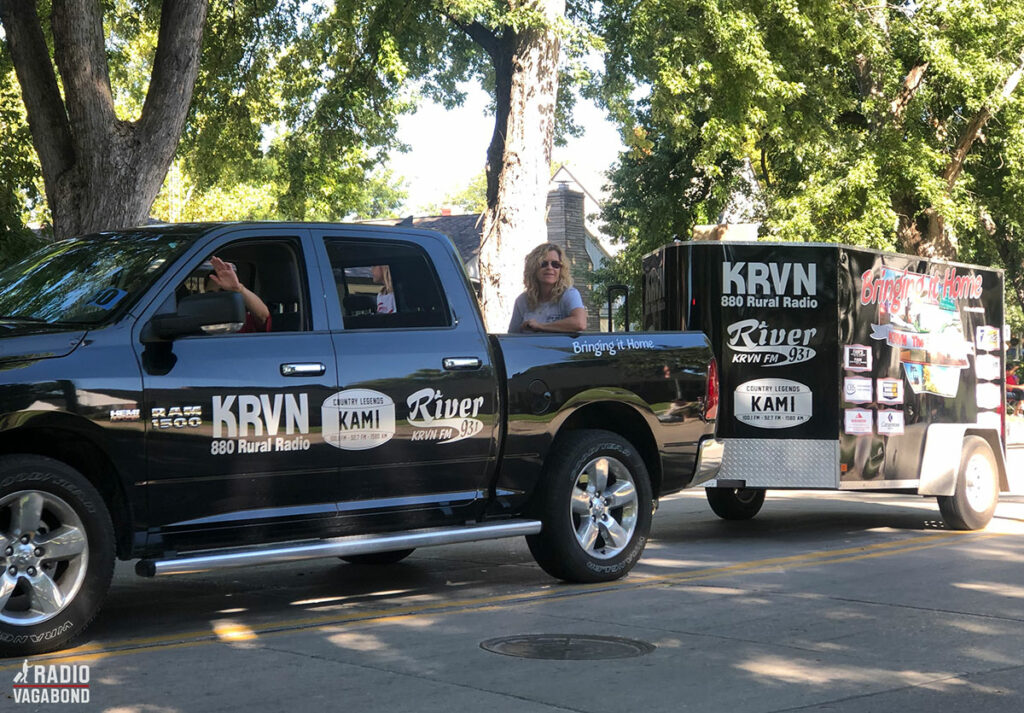
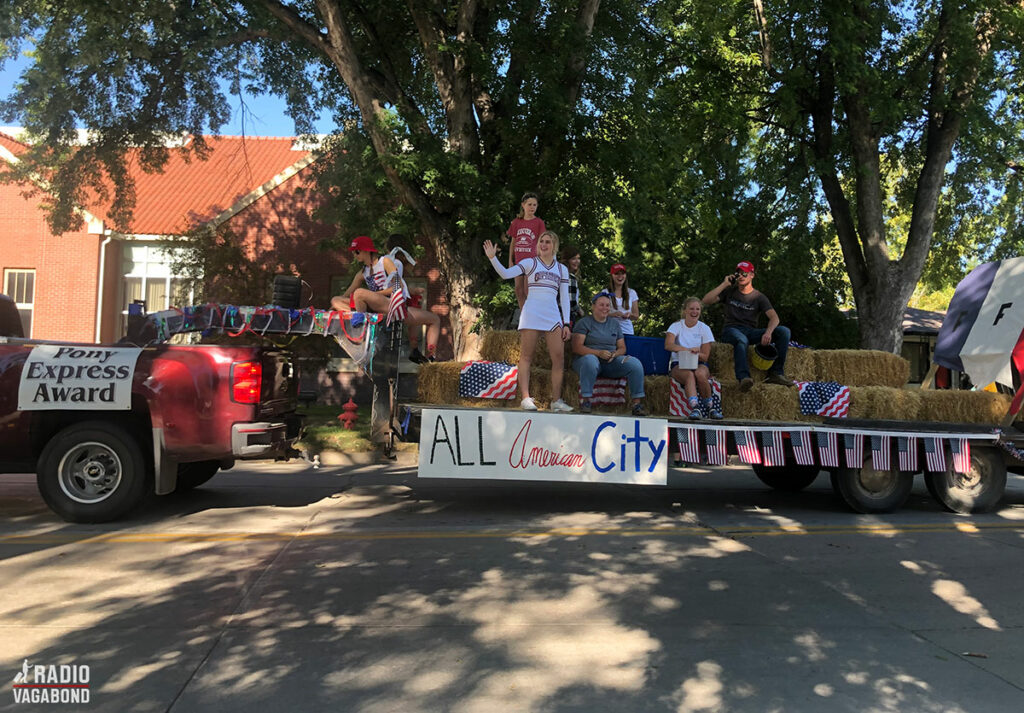
As the parade passes me, I reflect on the true heroes of the day: the people of Gothenburg, Nebraska. They have come out in full force to celebrate their town and their community. And isn’t that what parades are really all about? So, here’s to Gothenburg and all its people. Keep on parading, my new Scandinavian-American friends. Keep on parading.
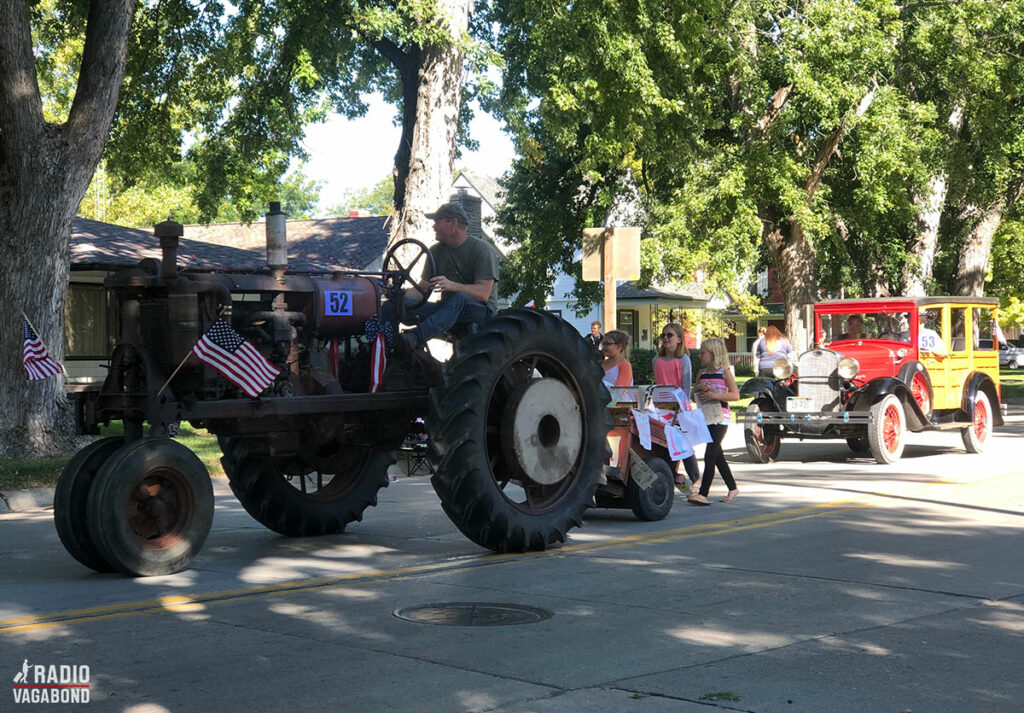


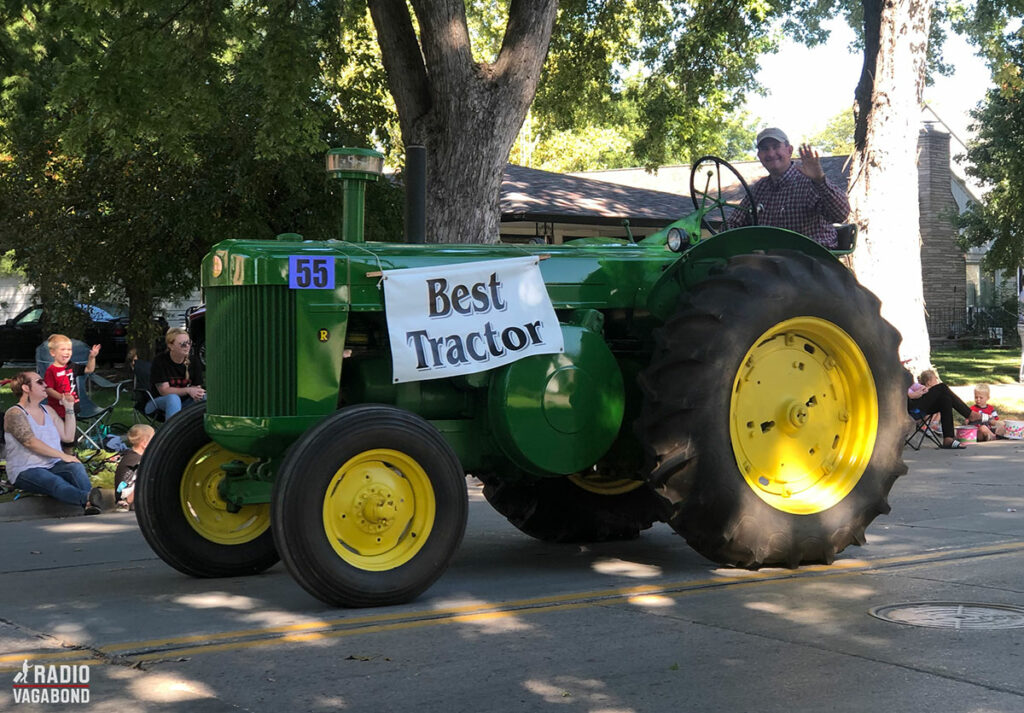
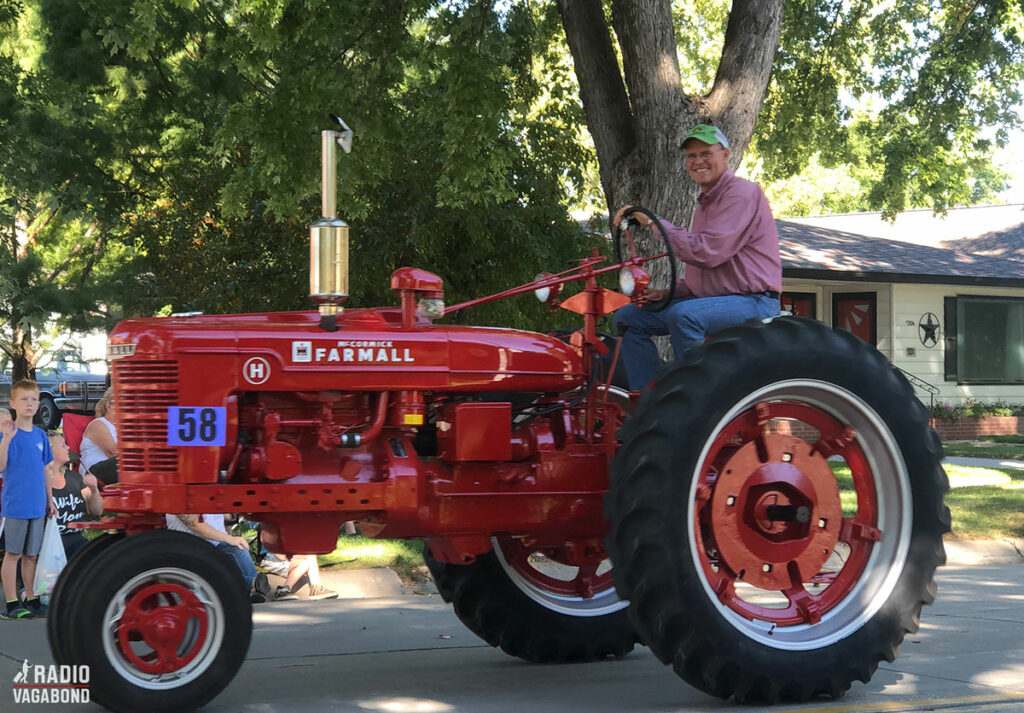
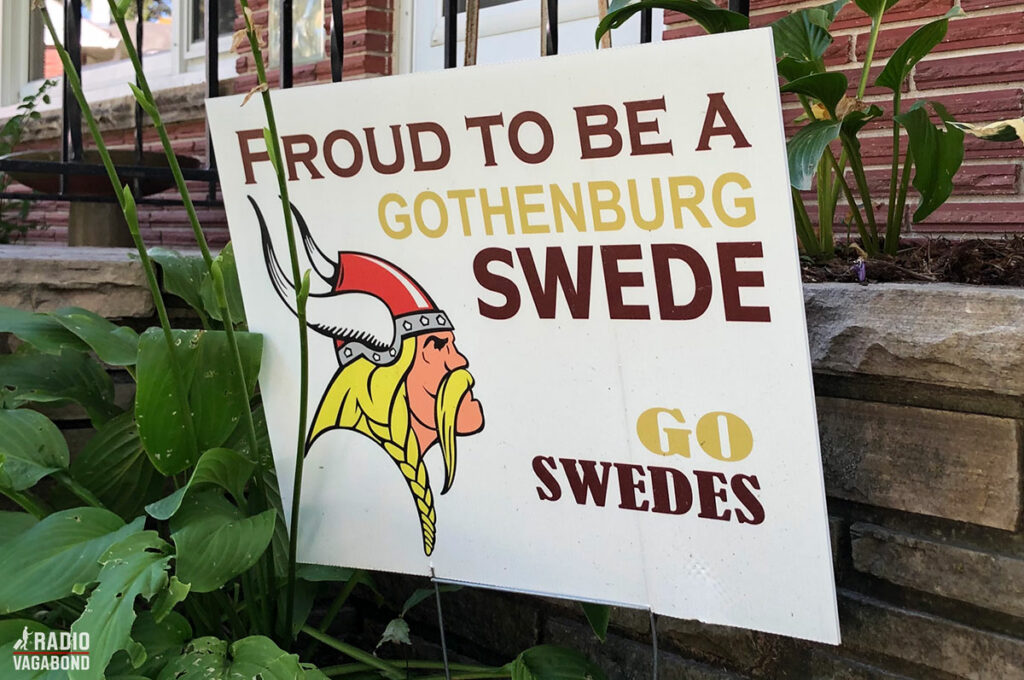
POEM WRITTEN BY AN AI
The Radio Vagabond Palle Bo,
Ventured to Nebraska with a curious glow.
On a farm he stayed, and Chris the cowboy he met,
Out to count the cattle, they ventured without fret.He learned about the cows, and their life on the land,
Happy cows make better meat, that’s what he could understand.
And then he heard the story of the ancestor of Mary Lou,
Who left Denmark for Nebraska, but why, nobody knew.Was she pregnant or just poor, seeking a better life?
The mystery remains, lost in time’s eternal strife.
But Palle Bo listened, and the tale she shared,
Of how her great-grandmother fared.The adventure went on, to Gothenburg, they flew,
To witness a parade, a colorful view.
A white open top Lincoln, the Grand Marshal in tow,
With fire trucks and a marching band, the beat, it did flow.A drawing of a Viking, classic cars shining bright?
Tractors and a dentist, all a child’s delight.
The cheerleaders and balloons, the Church’s float,
All a part of the show, in this little city, afloat.And so, the Radio Vagabond, Palle Bo,
Continues his journey, still with a great flow.
To learn and share, with all who will hear,
His tales of travel, bringing us all near.
My name is Palle Bo, and I gotta keep moving. See you.
This episode is dedicated to Mary Lou’s friend, Jan, who invited us to the parade.
As you heard, she was so funny and so full of life. But shortly after my visit, her cancer returned in full force, and she passed away within the year.
I’m sure, you will be missed, and I’m so glad I got to meet you.
JEG VIL GERNE HØRE FRA DIG
Fortæl mig hvor er du, og hvad du laver lige nu, mens du lytter til denne episode. Du kan enten sende mig en email på lytter@radiovagabond.dk eller udfylde formularen her på Radiovagabond.dk.
Eller sende en stemmebesked ved at klikke på banneret herunder.
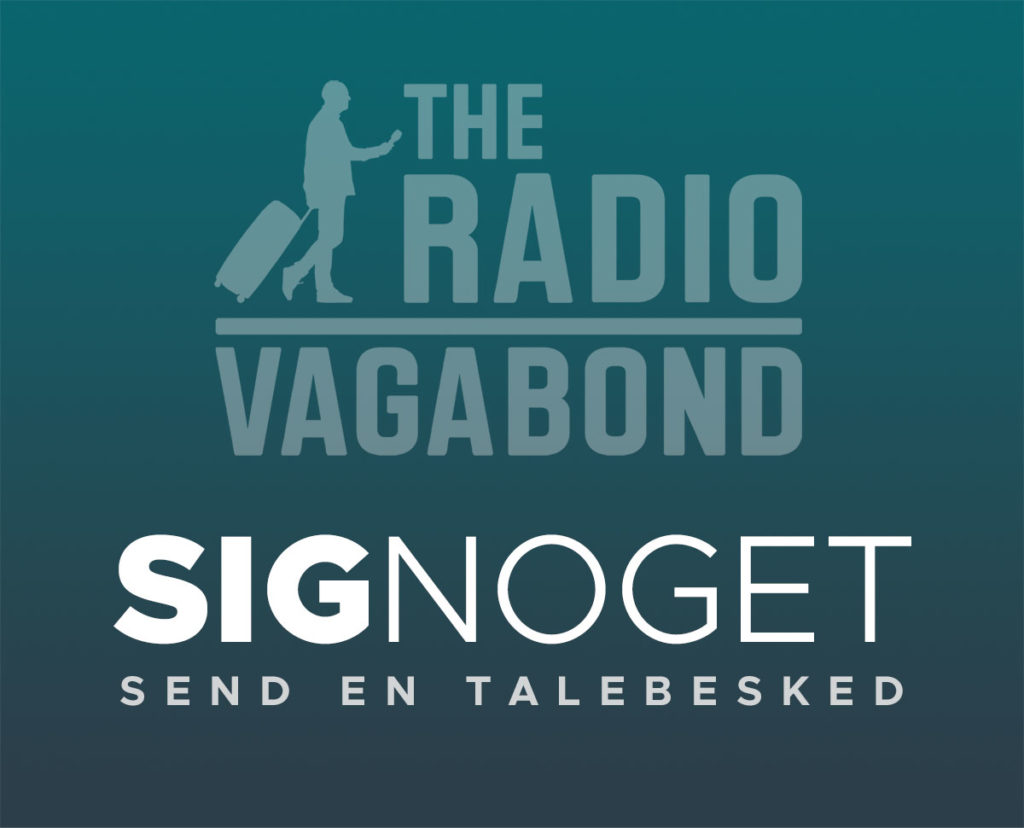
Uanset hvad du gør, vil jeg meget gerne høre fra dig. Det er altid sjovt at høre, hvem der sidder ude på den anden side af højttaleren.
DEL MED EN VEN
Har du en ven, der også er interesseret i at rejse og få inspiration til at komme ud og opleve verden? Så del denne episode. Send en besked eller ta’ telefonen og fortæl om den. Du kan også bare klikke på en af de farvestrålende knapper herunder.
SPONSOR
Som altid tak til min sponsor, Hotels25.dk. Det er et sted, du altid kan finde de bedste priser på overnatning rundt omkring i verden. Og det er garanteret den bedste pris.
RADIOGURU
Radiovagabond er produceret af Radioguru, som også kan hjælpe dig med at starte din egen podcast.
